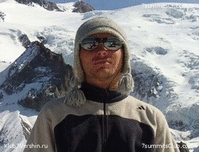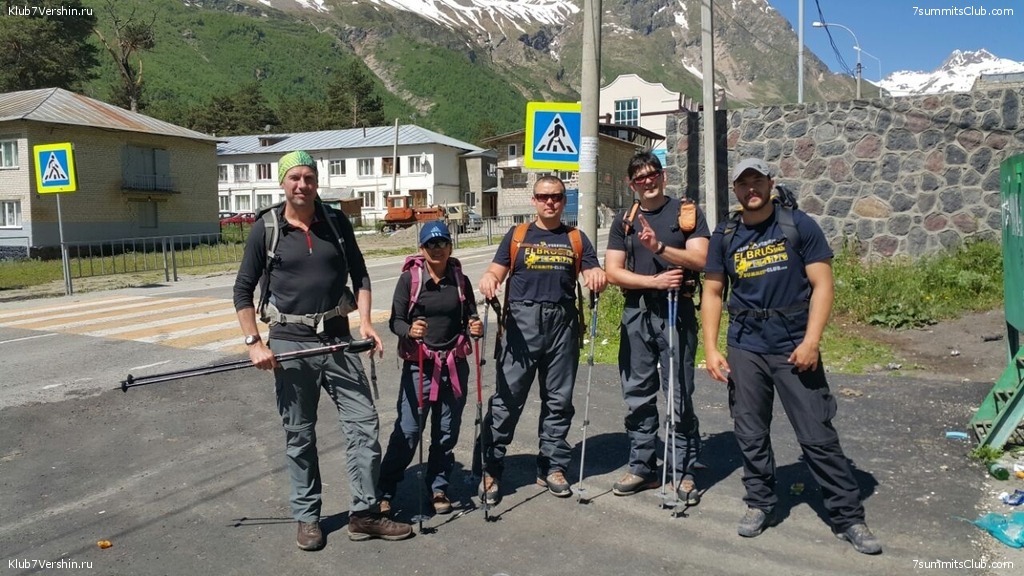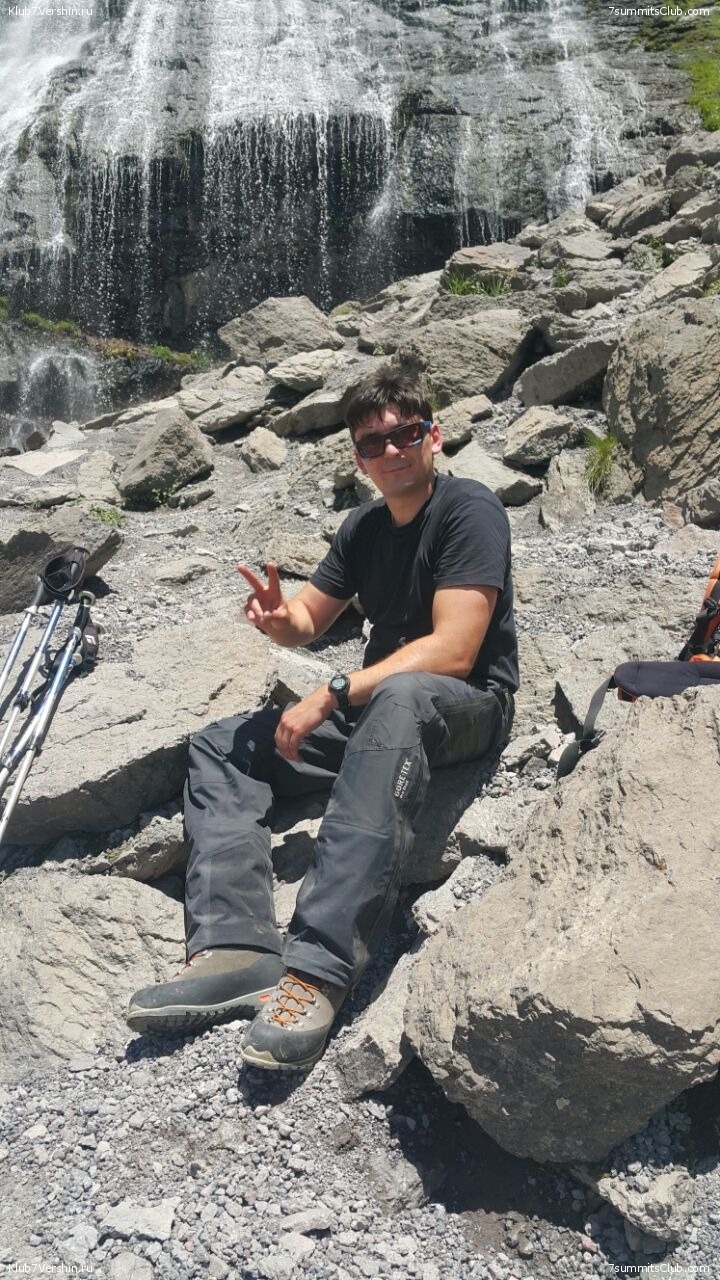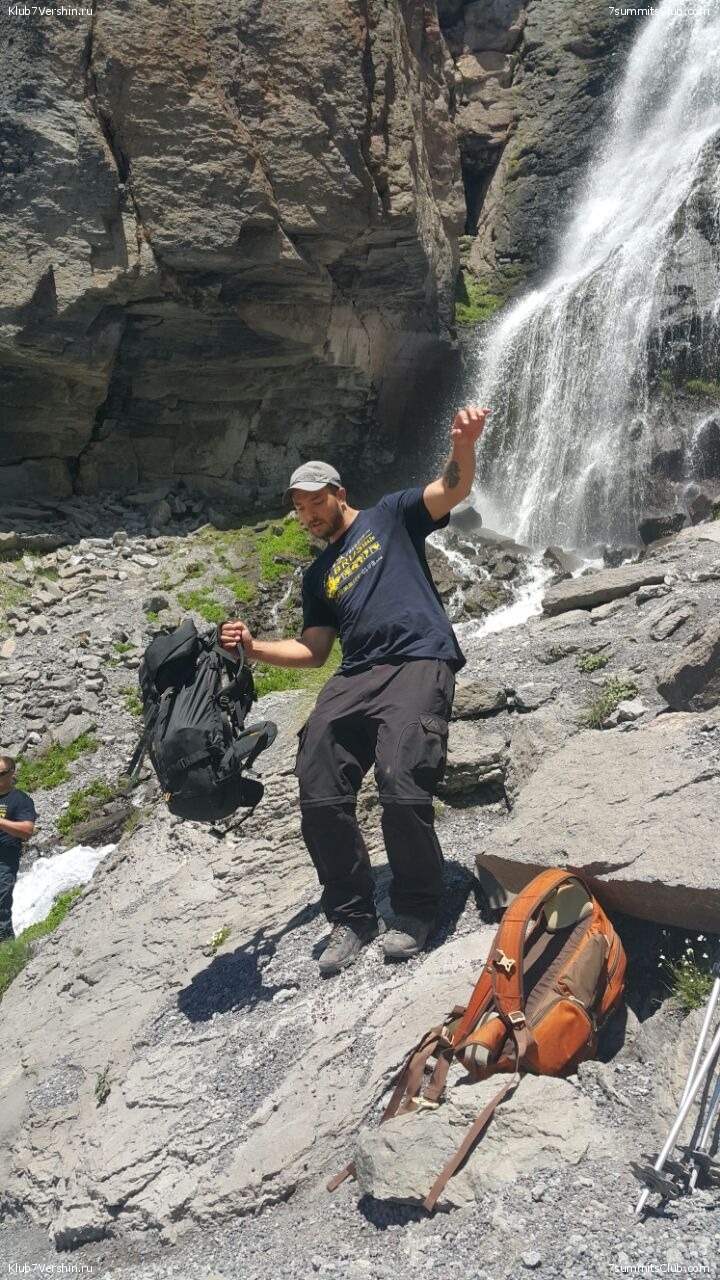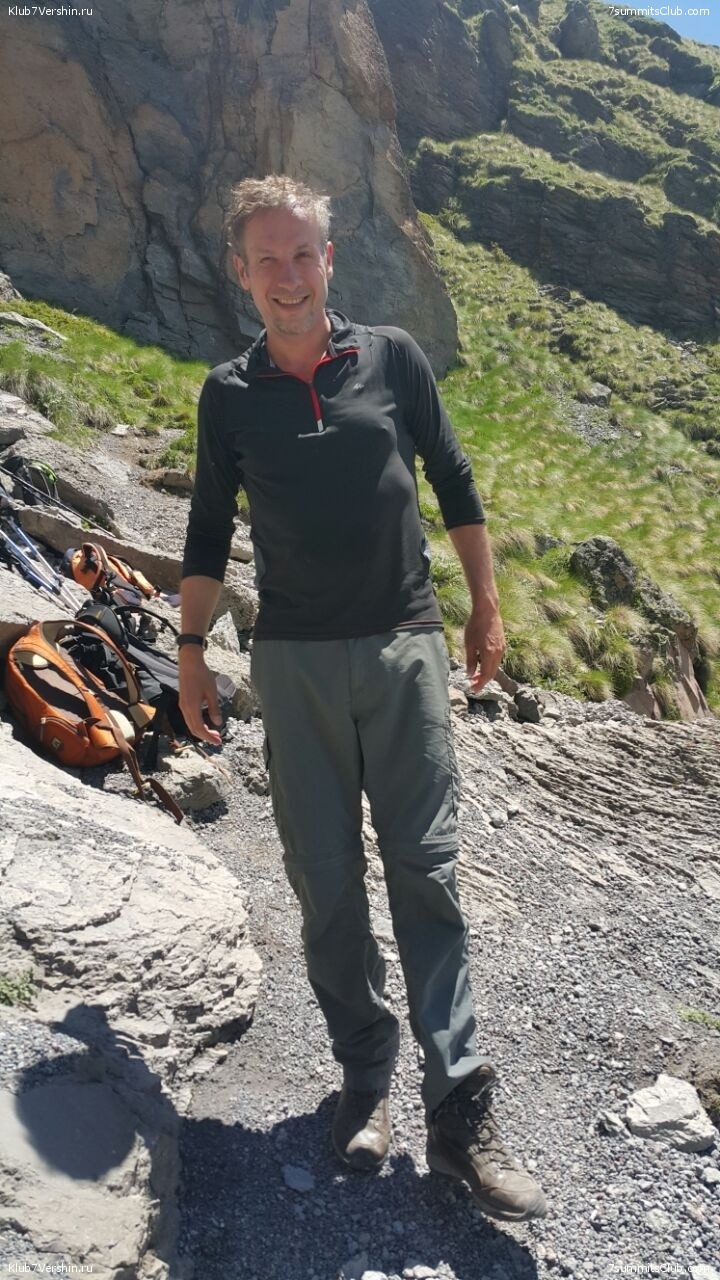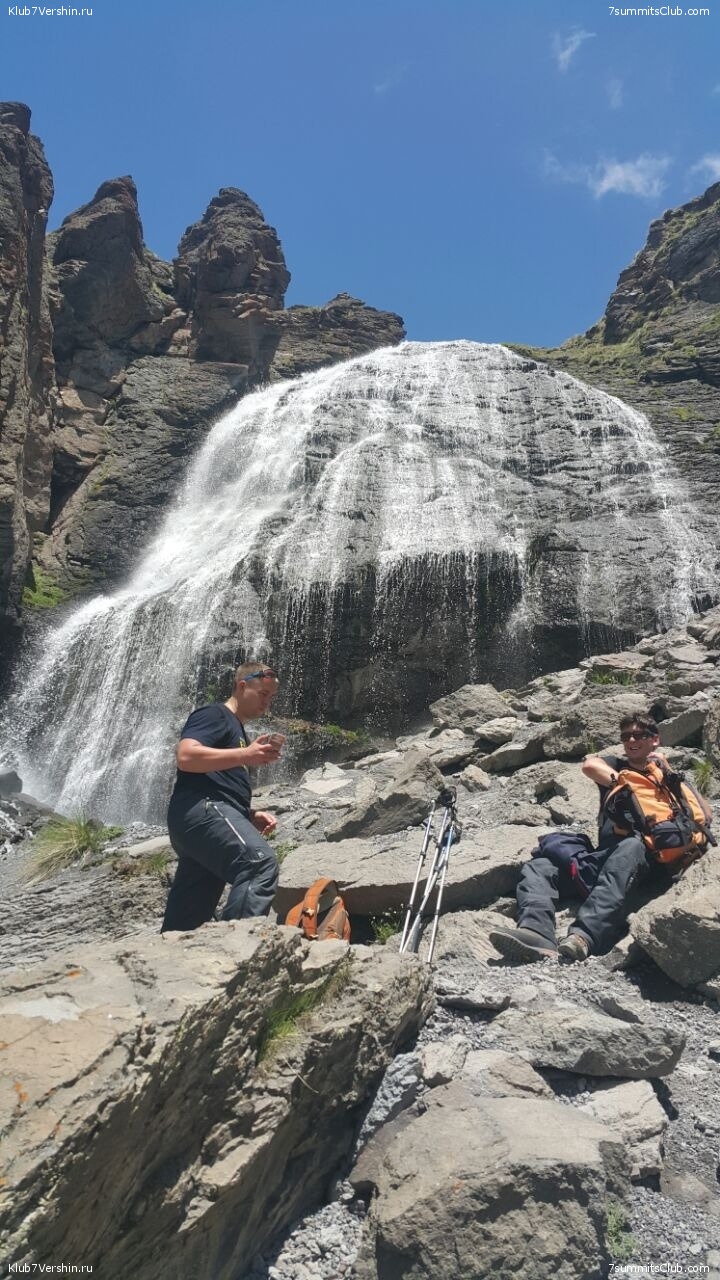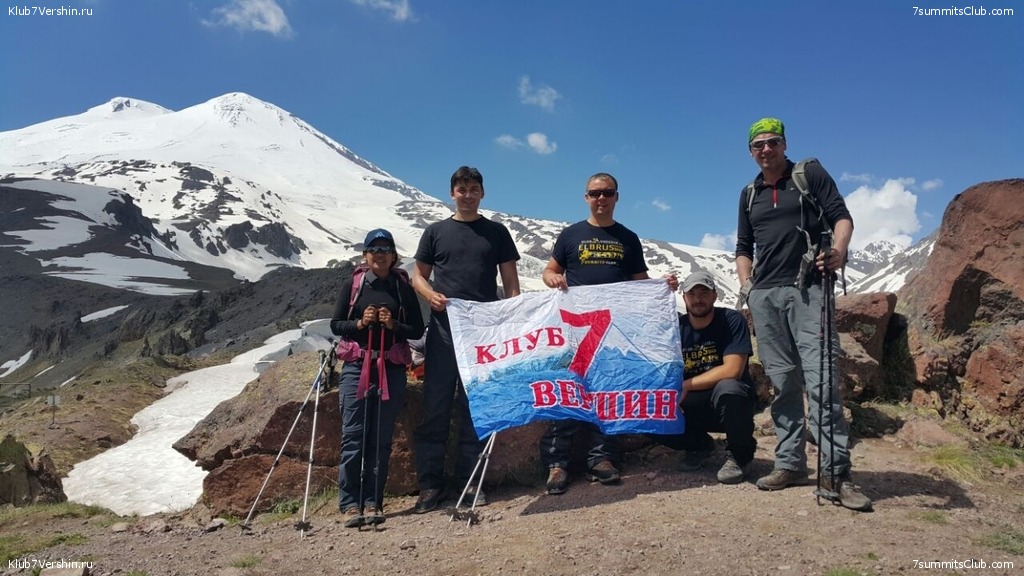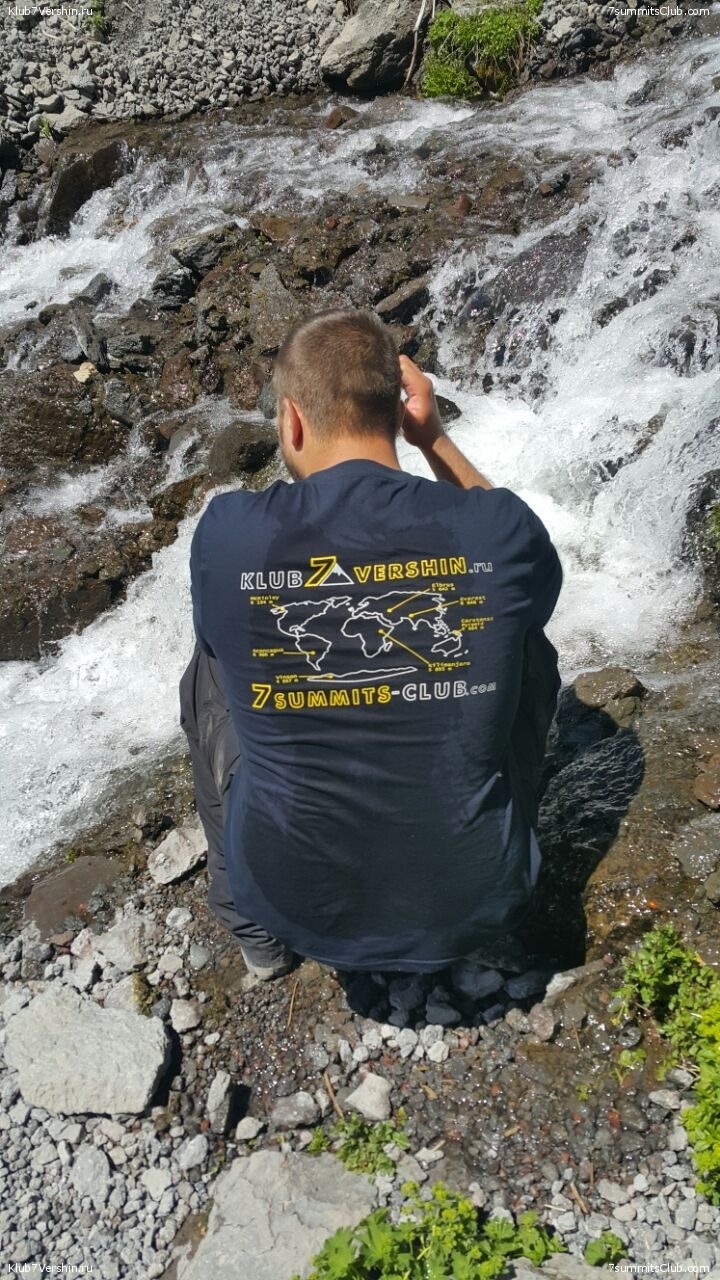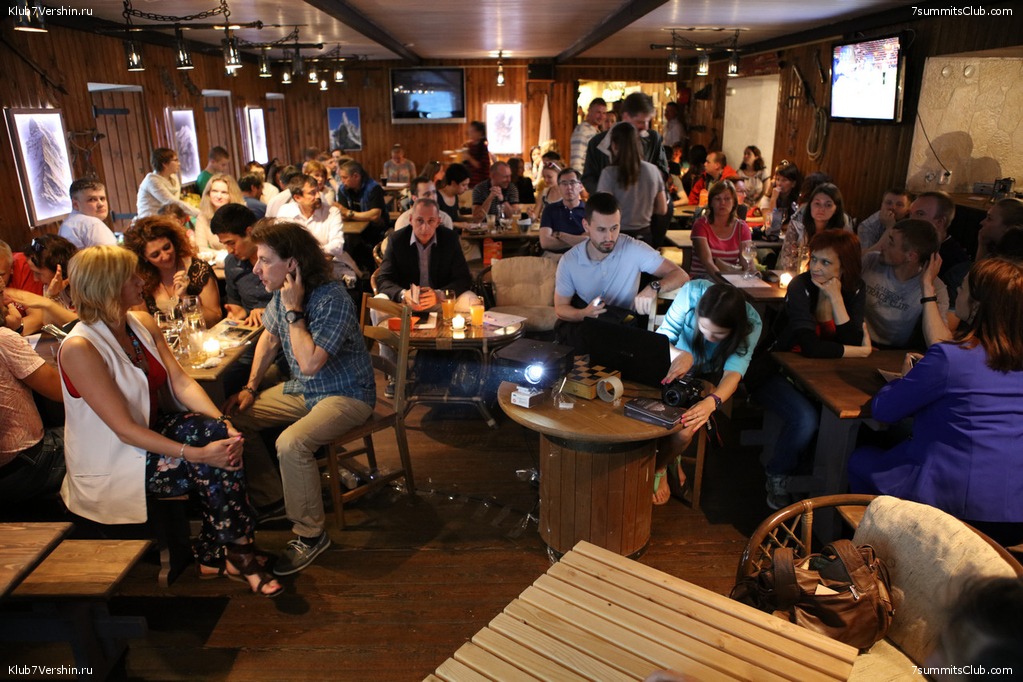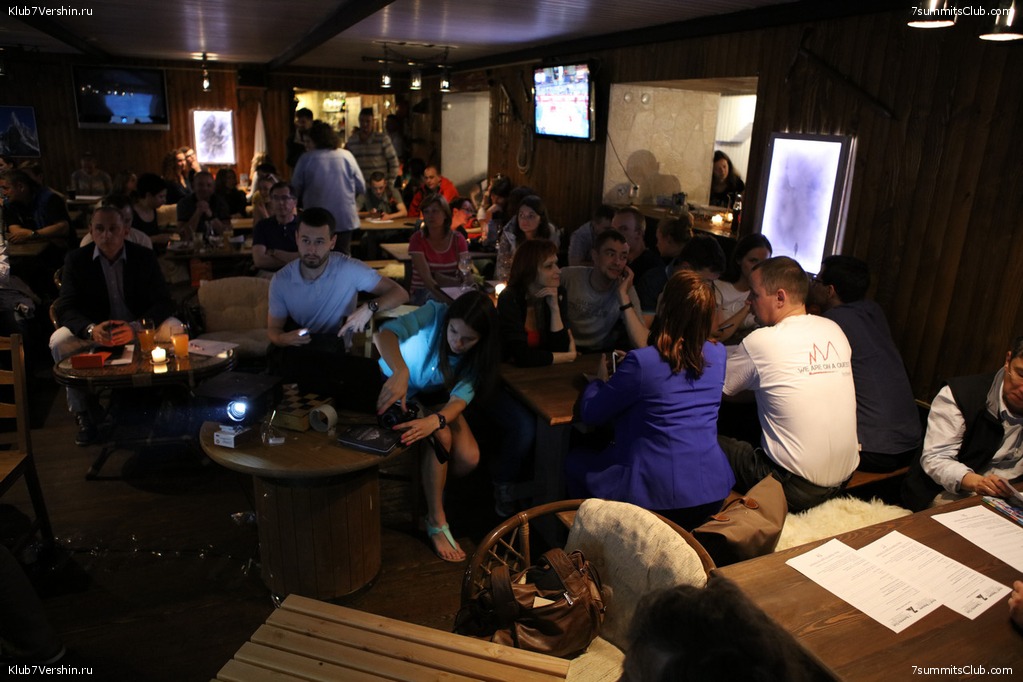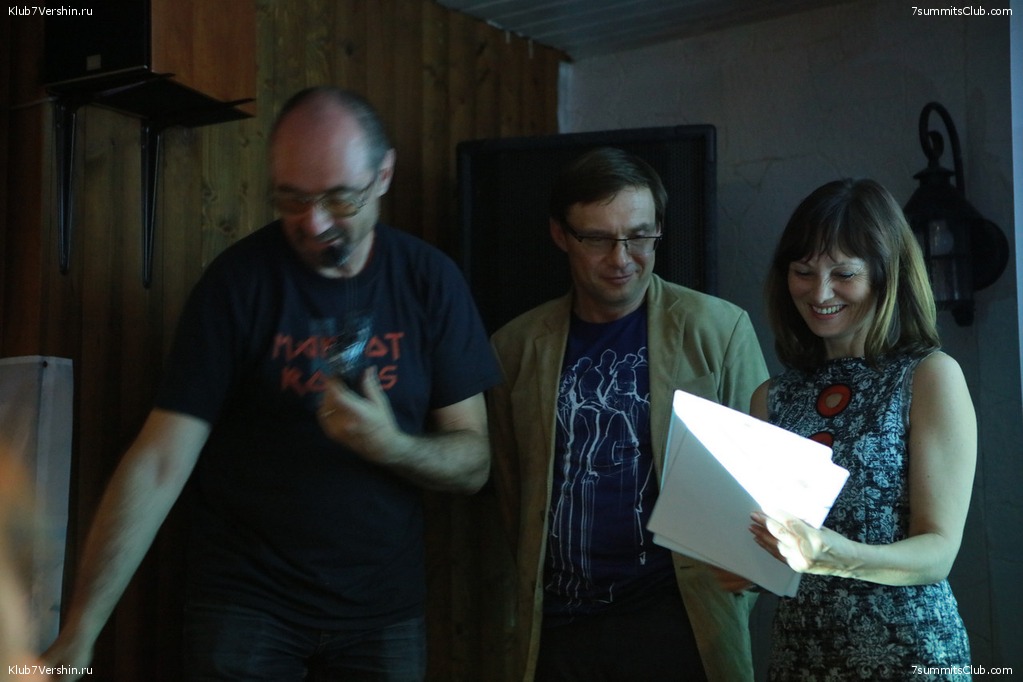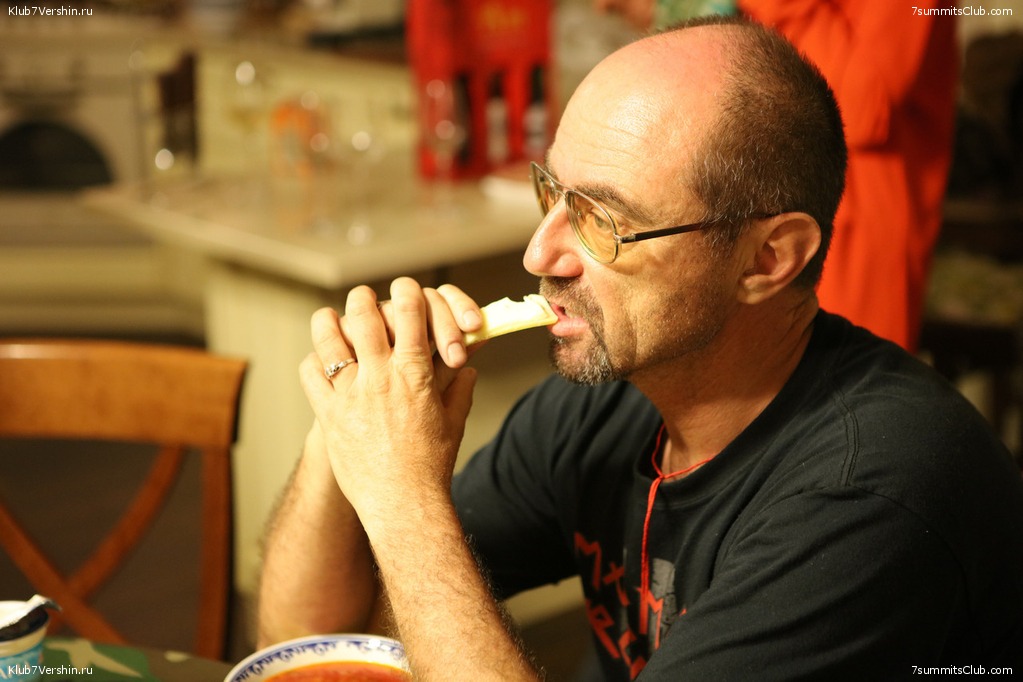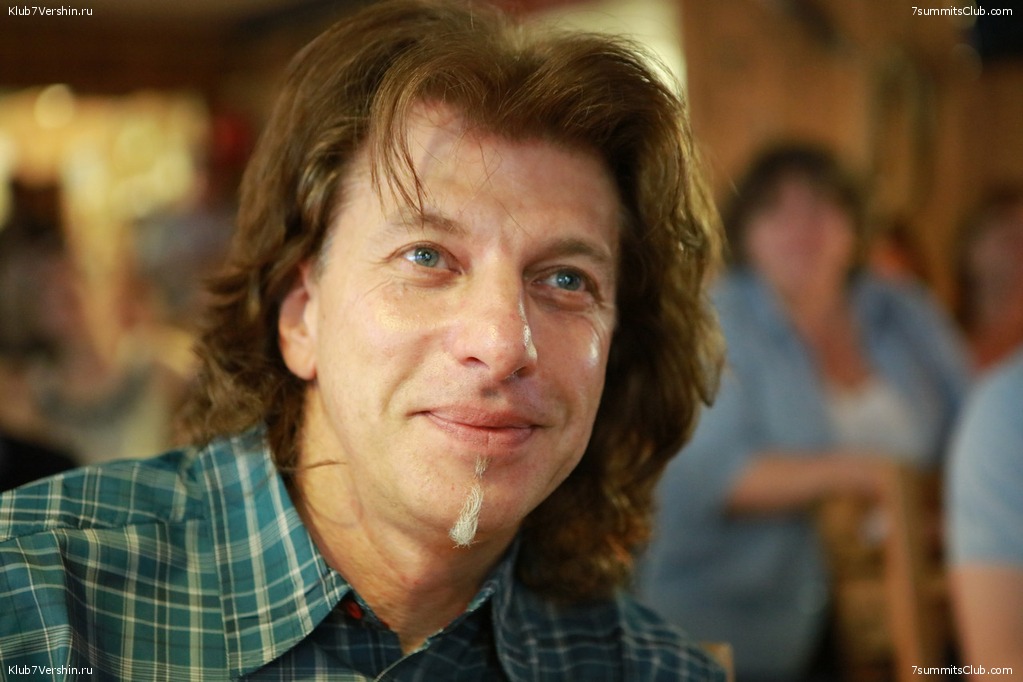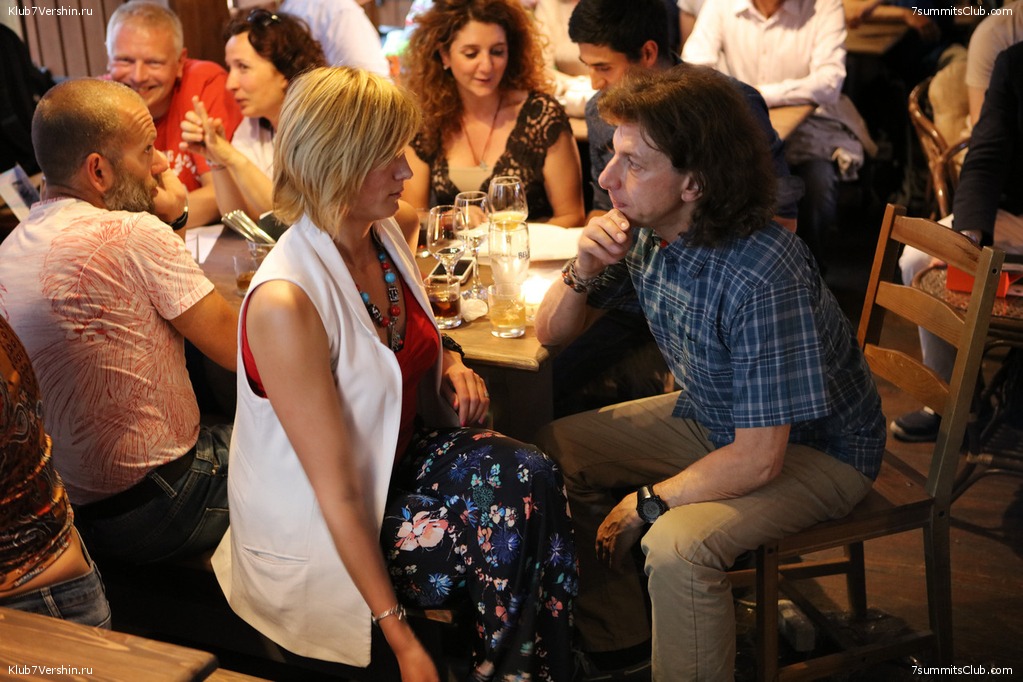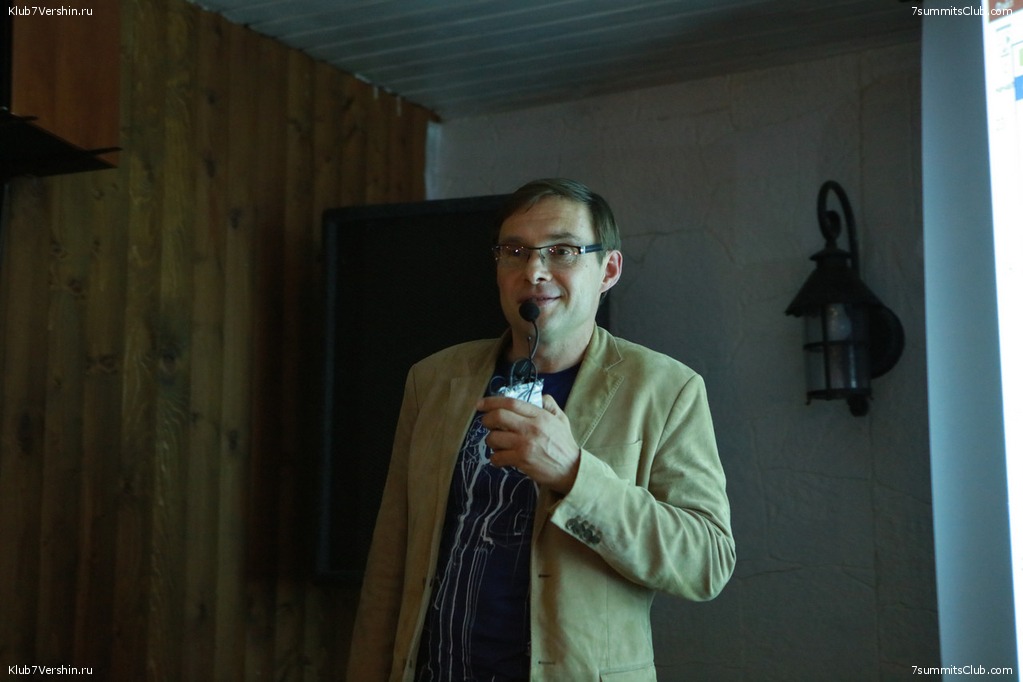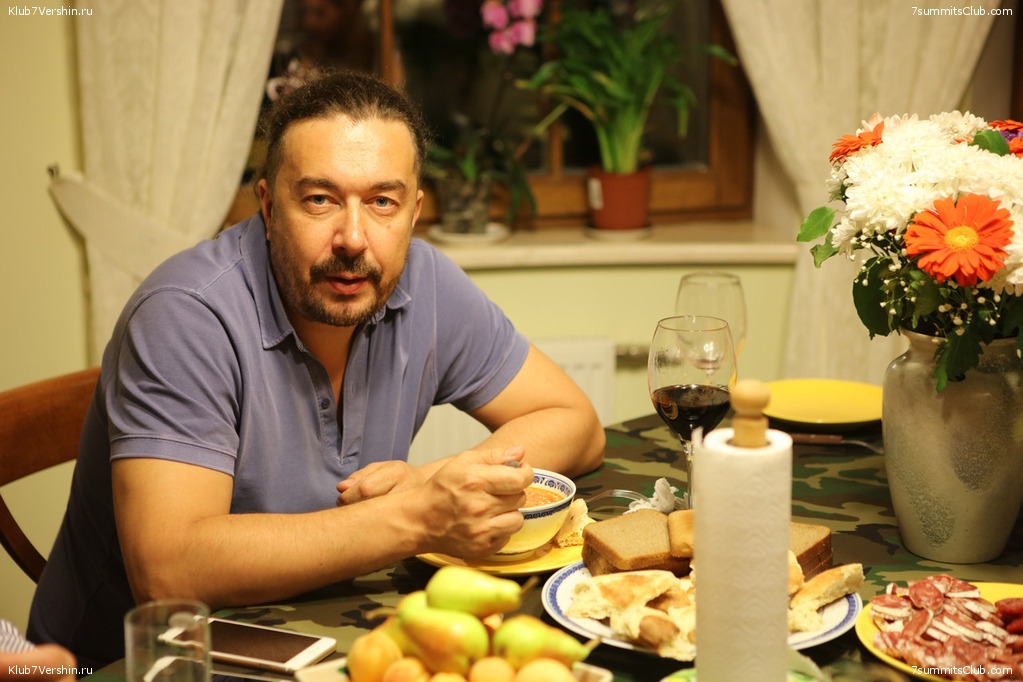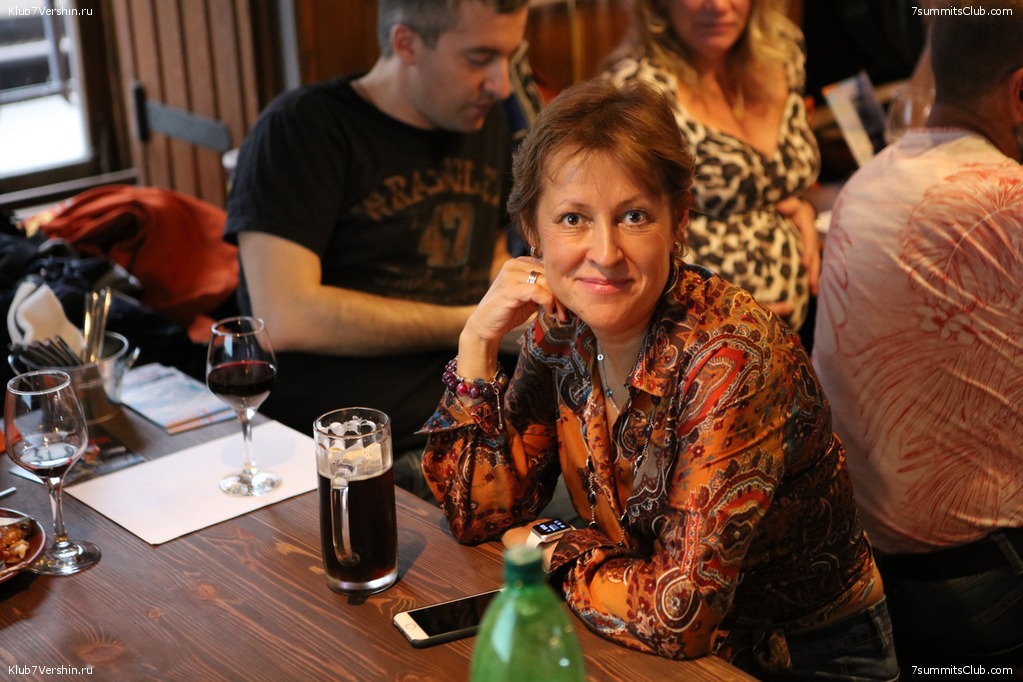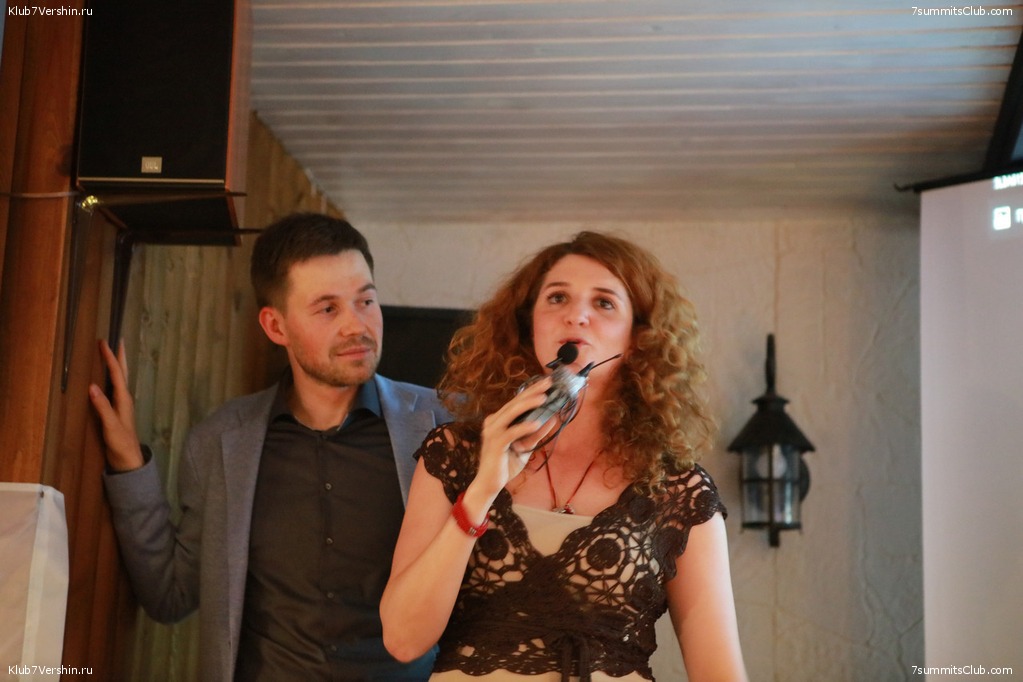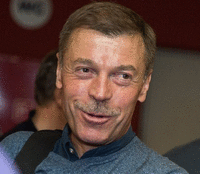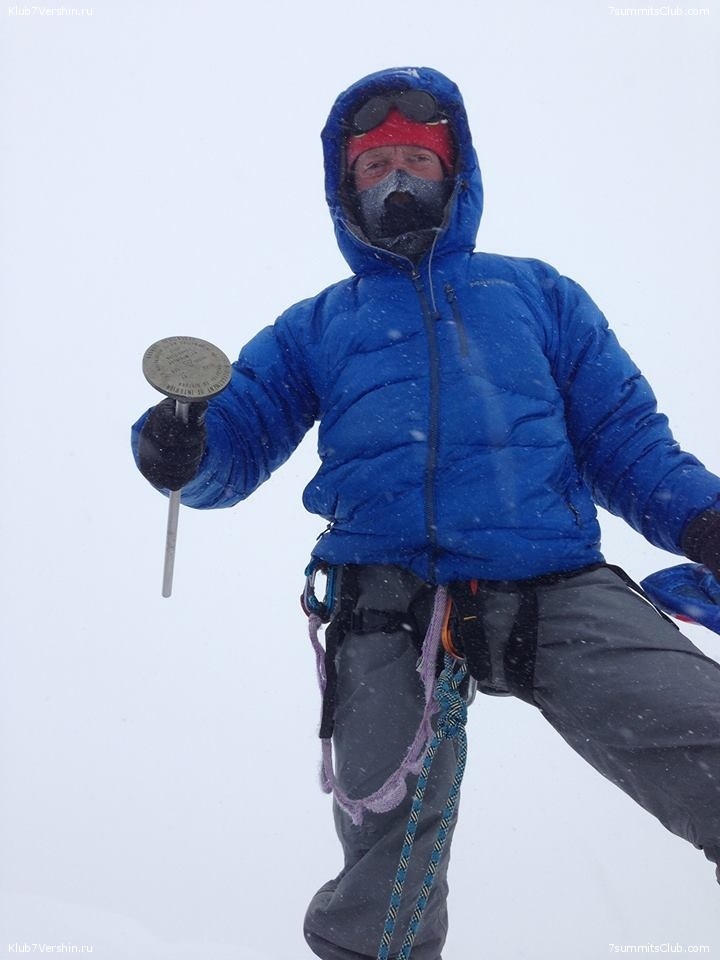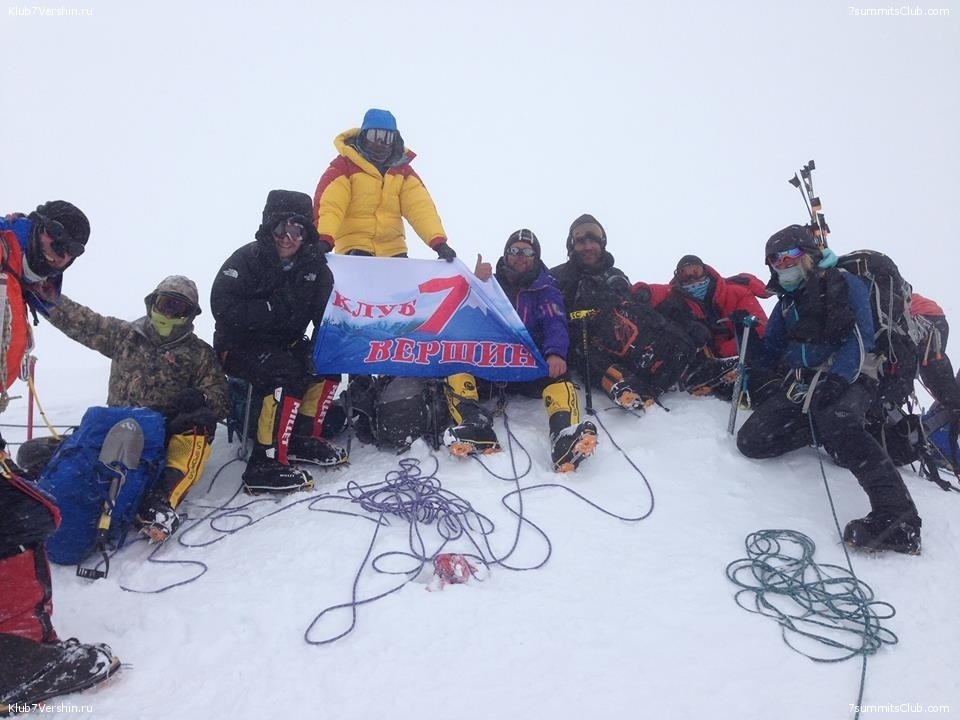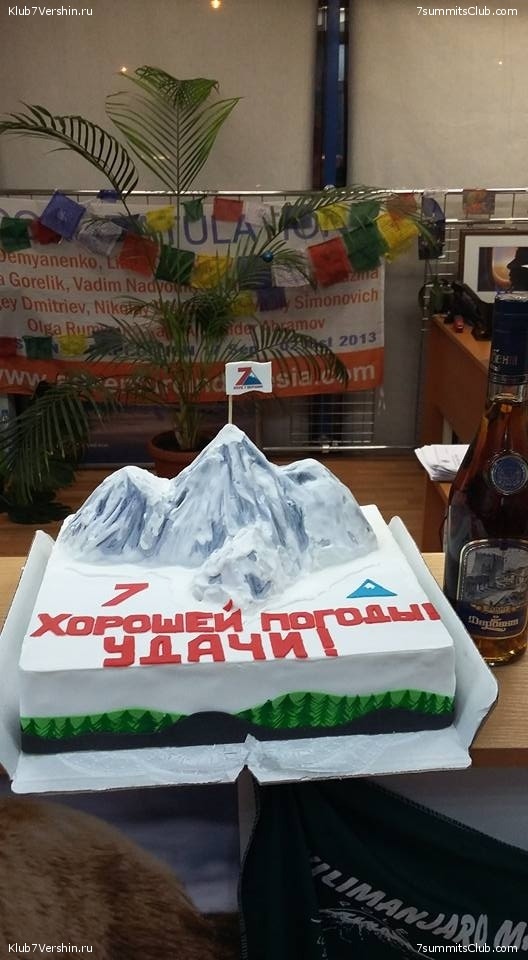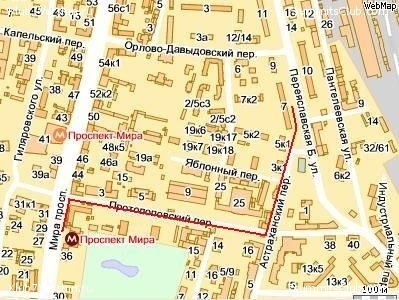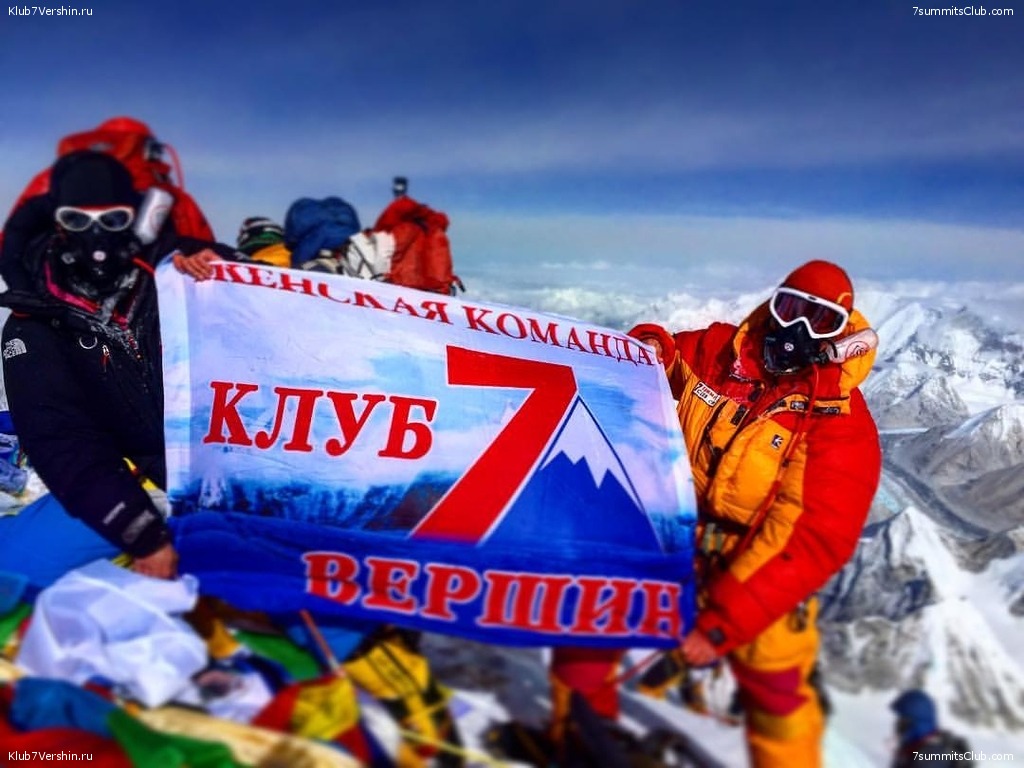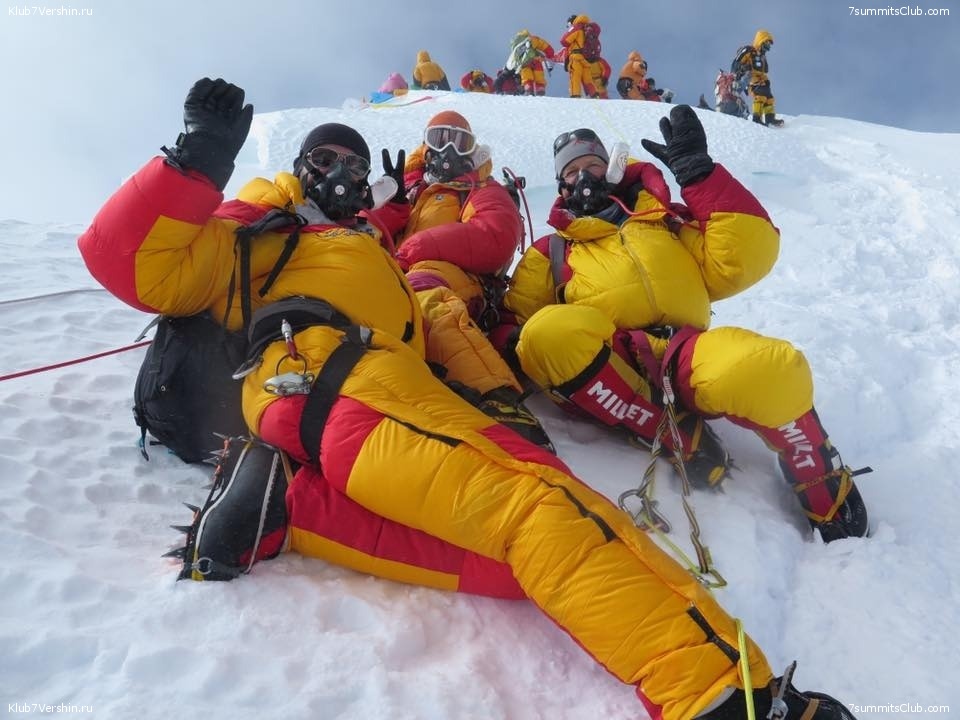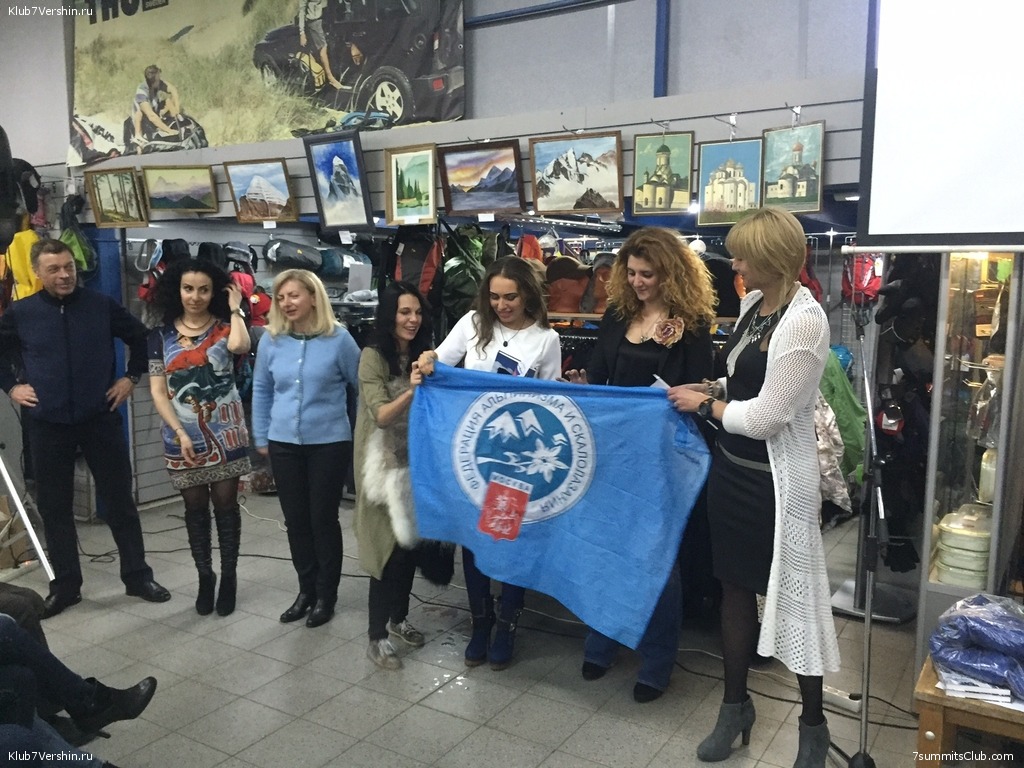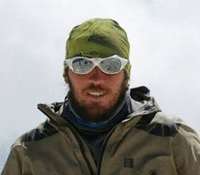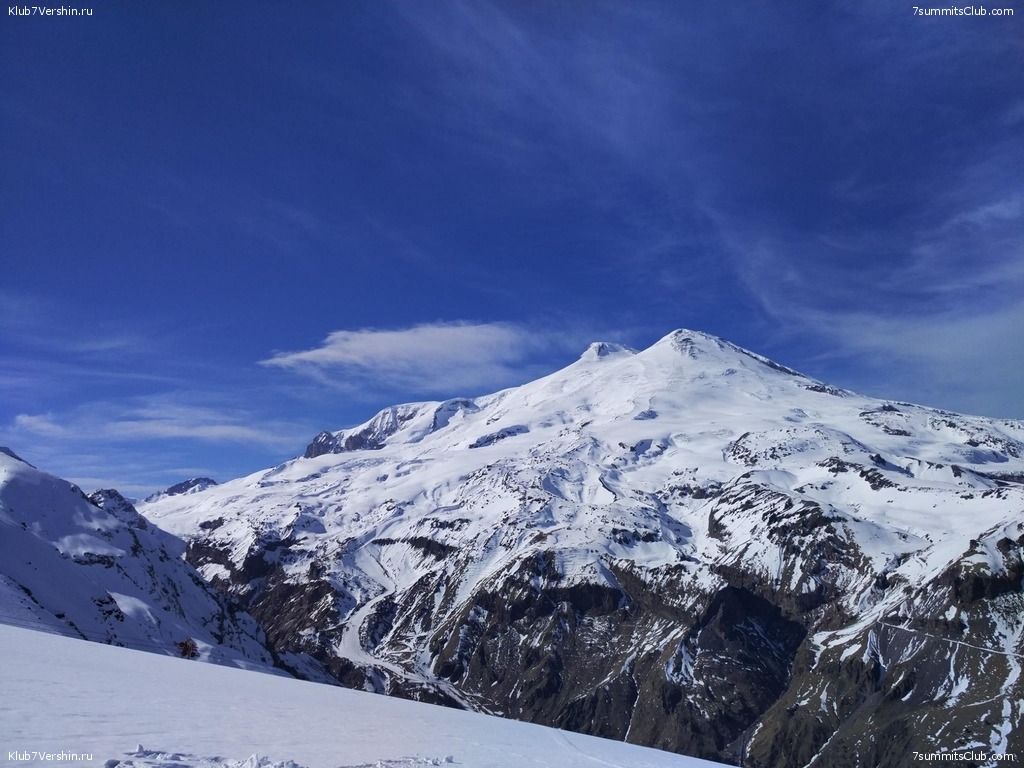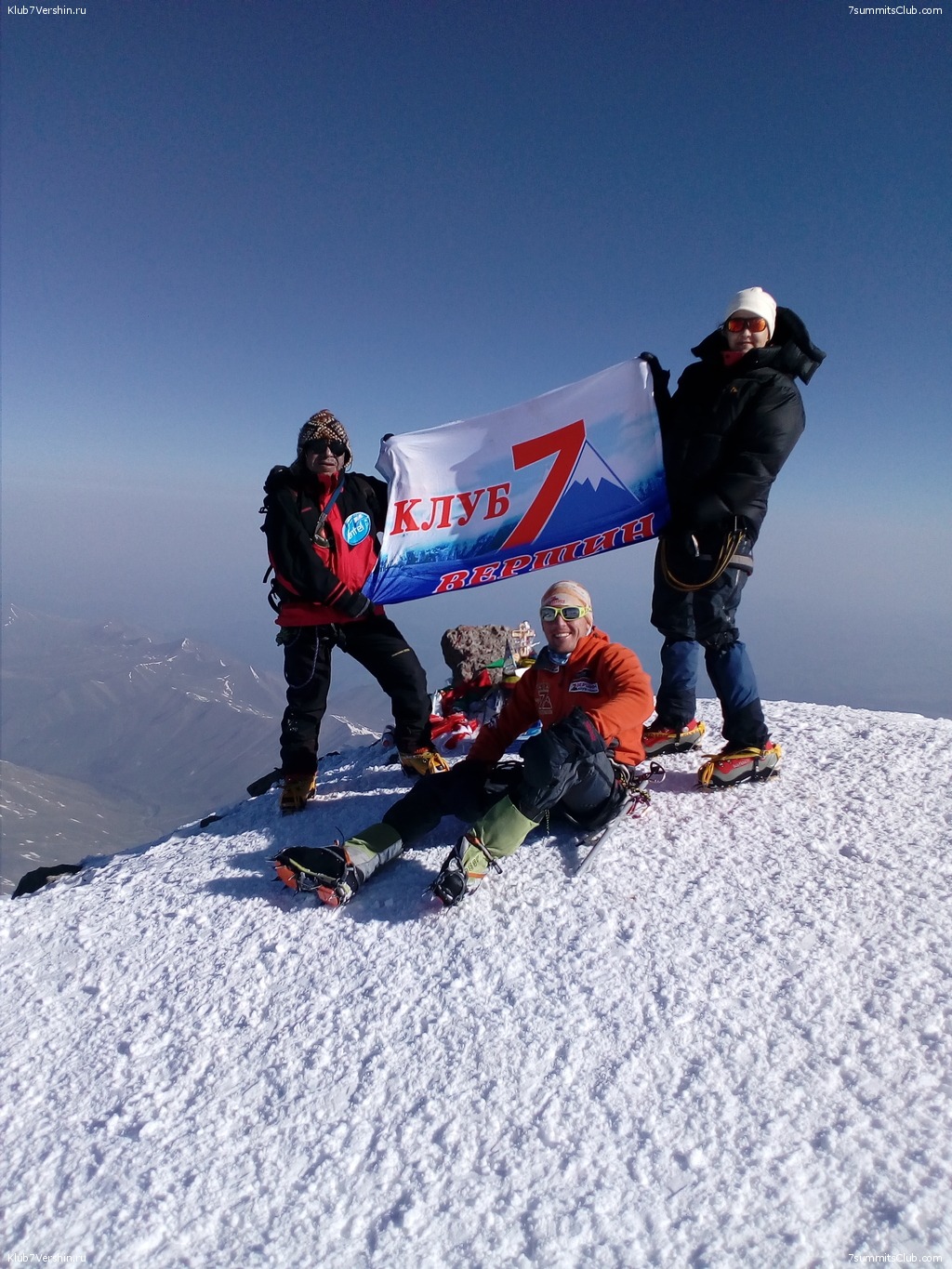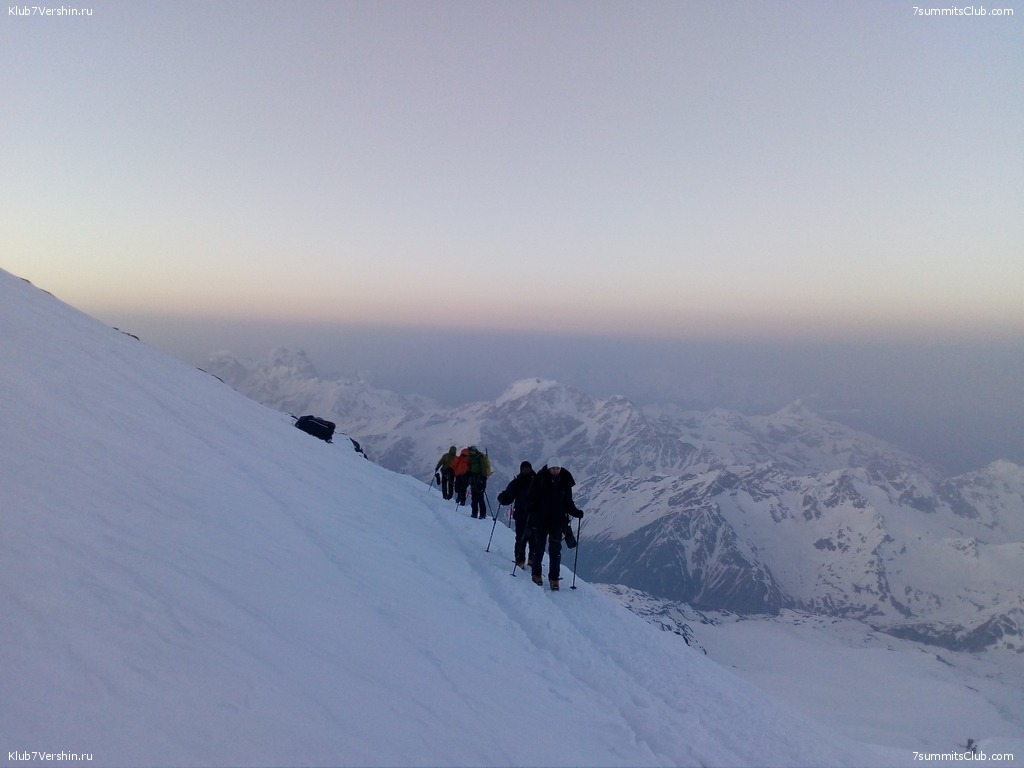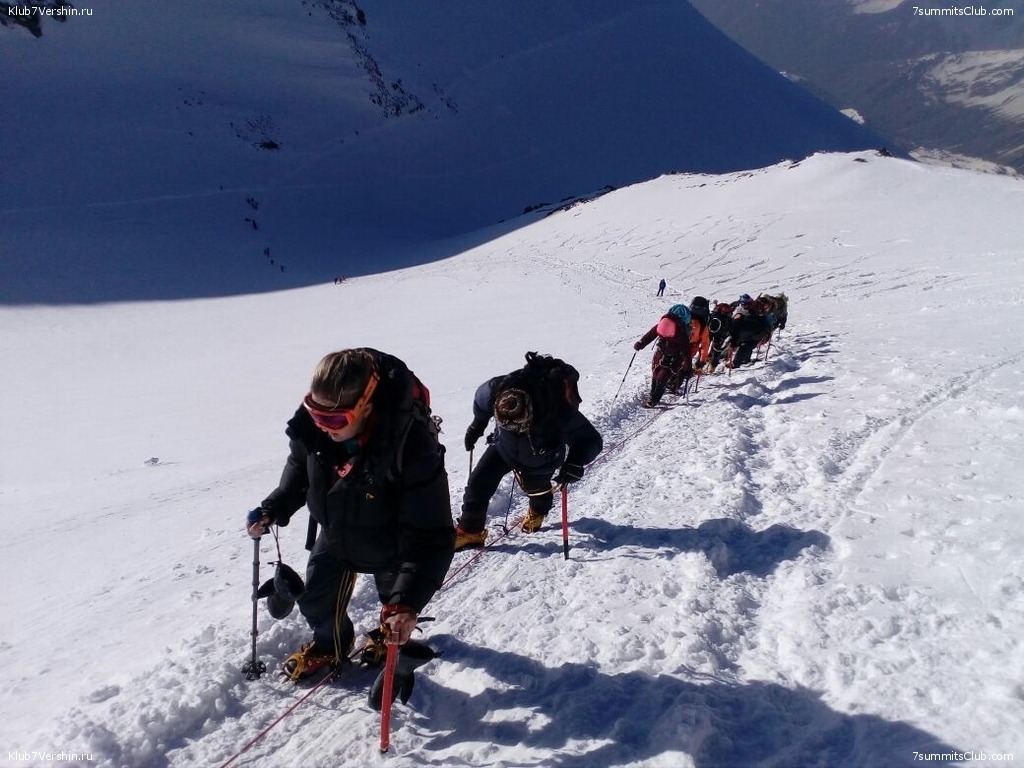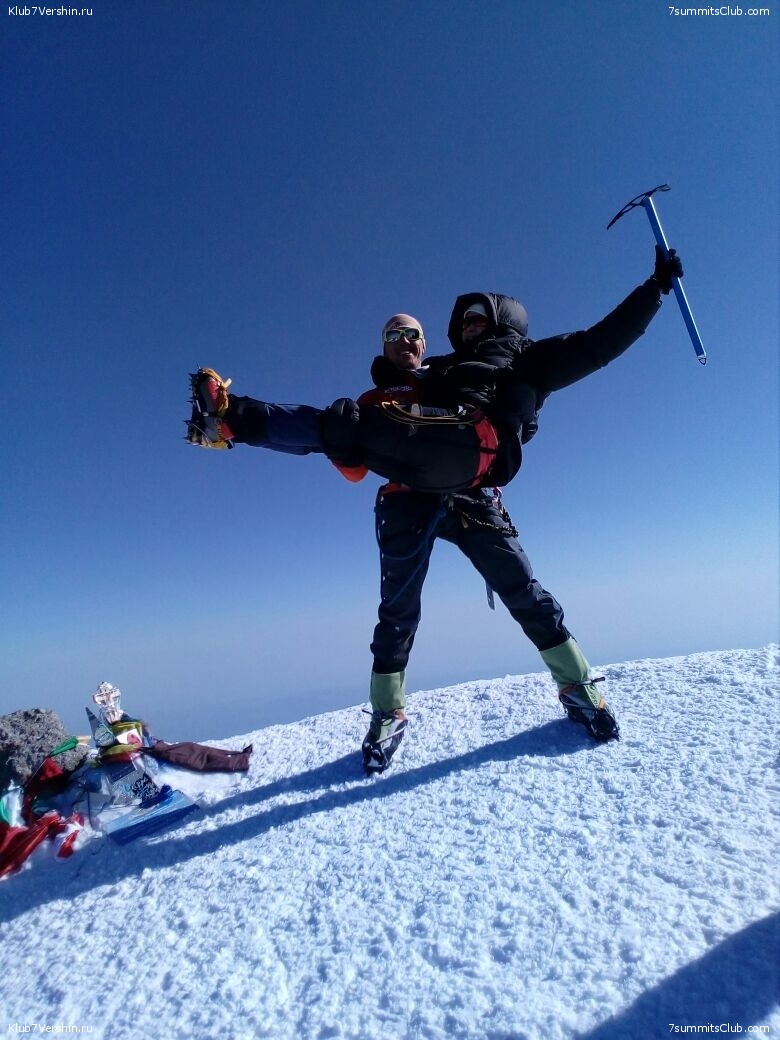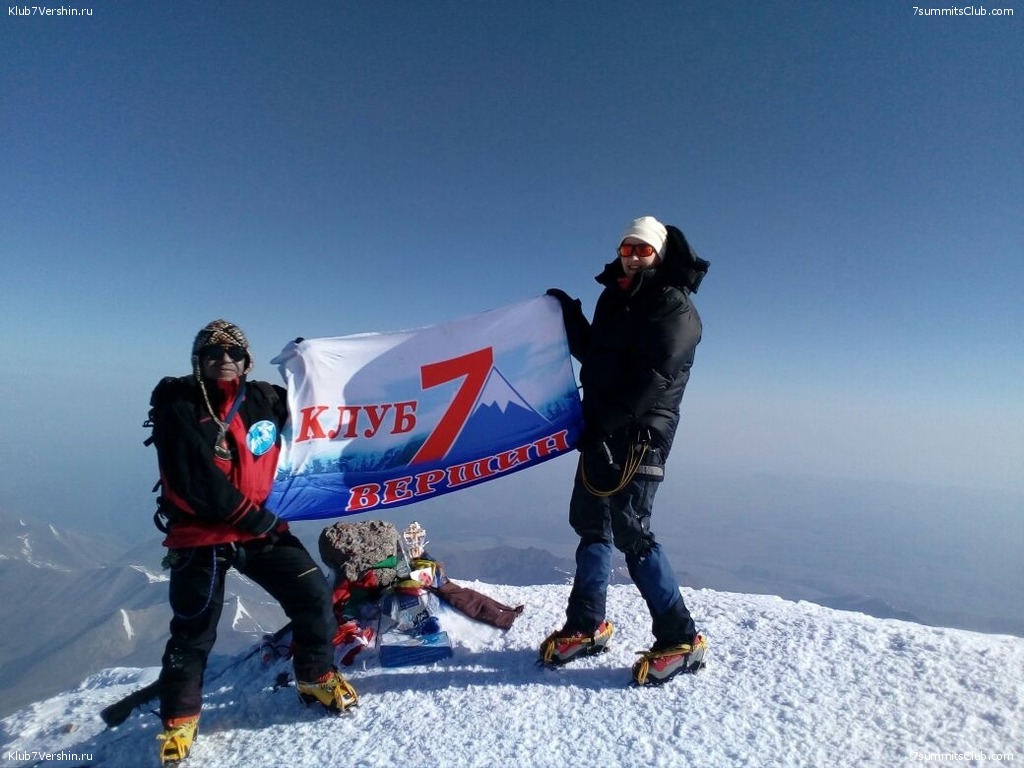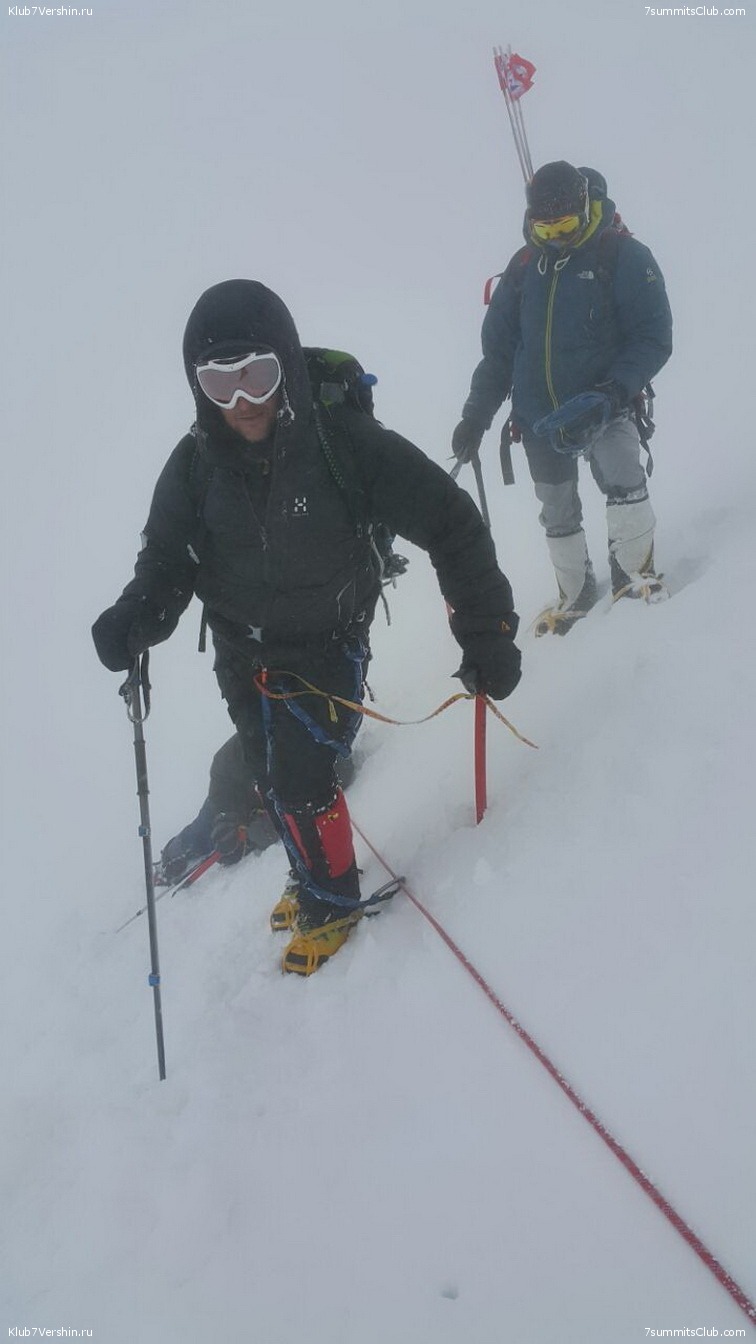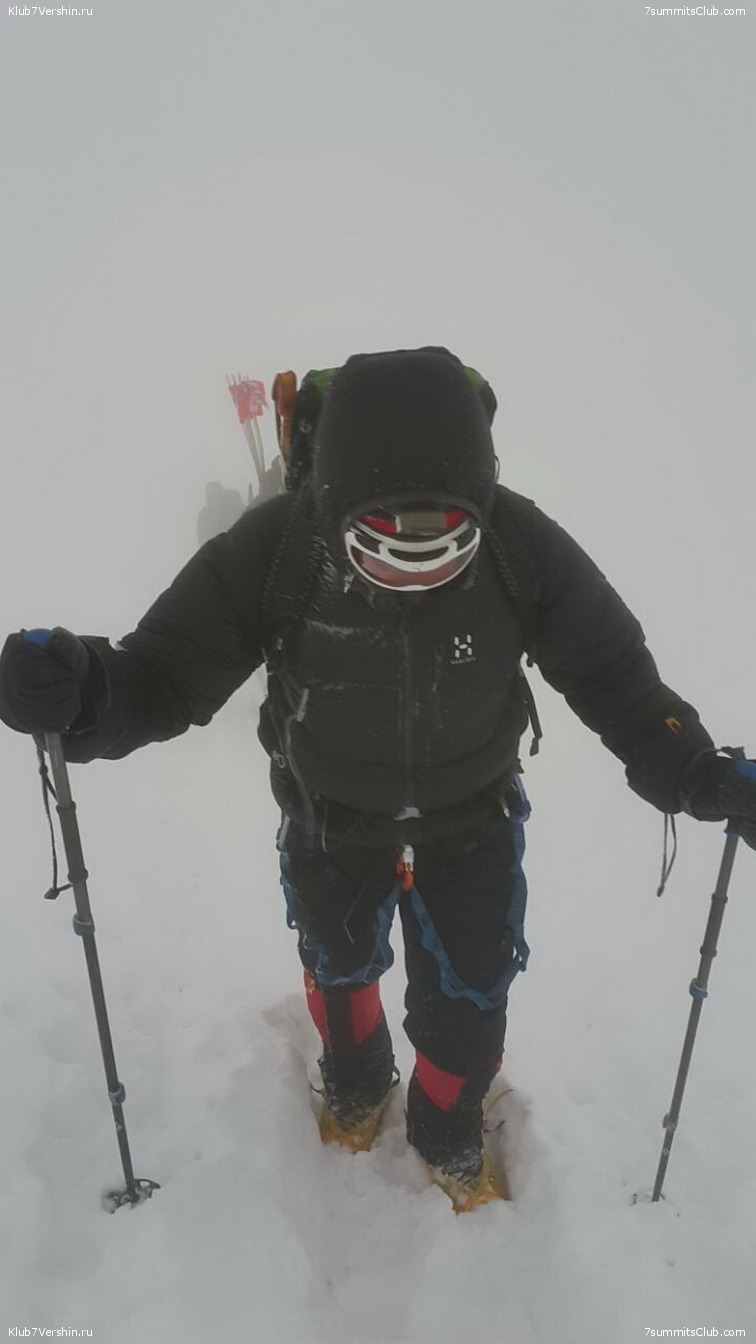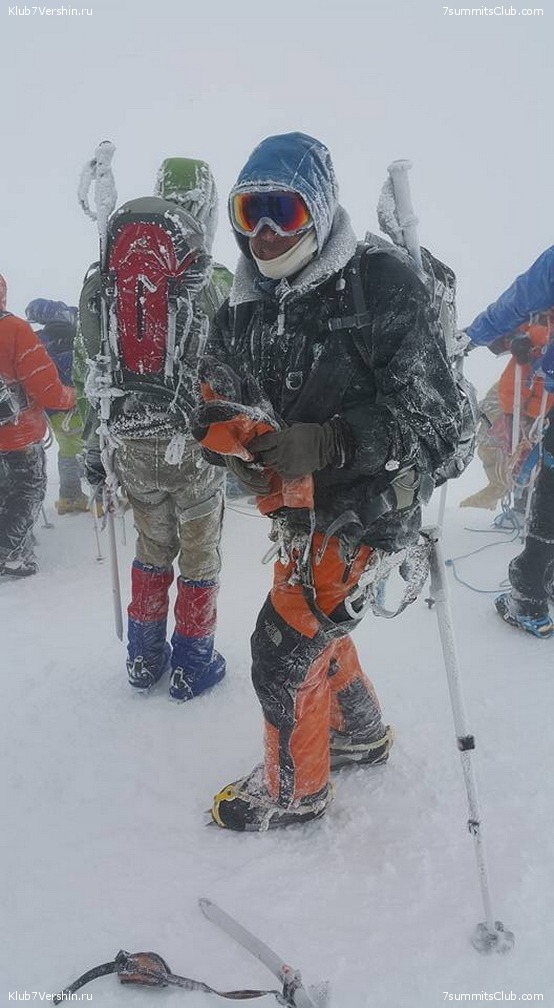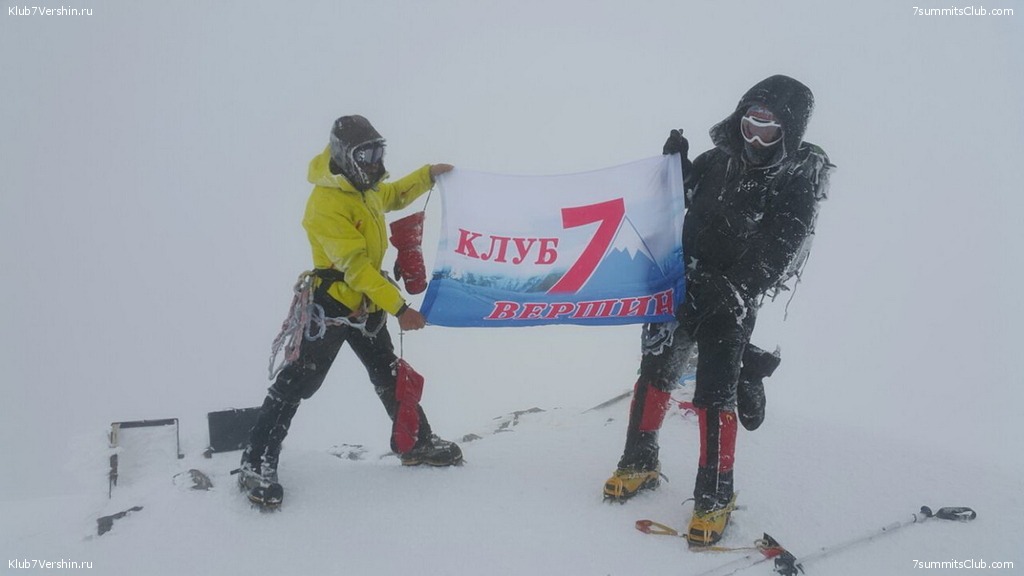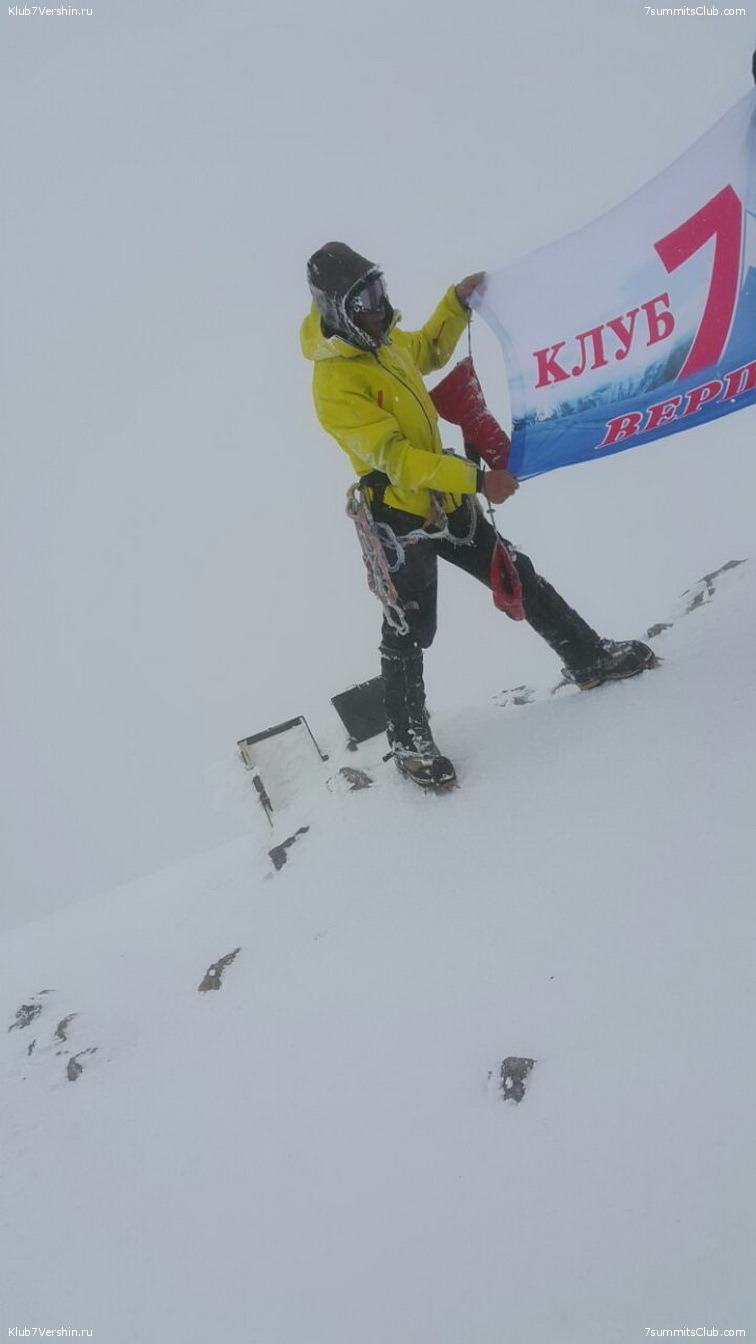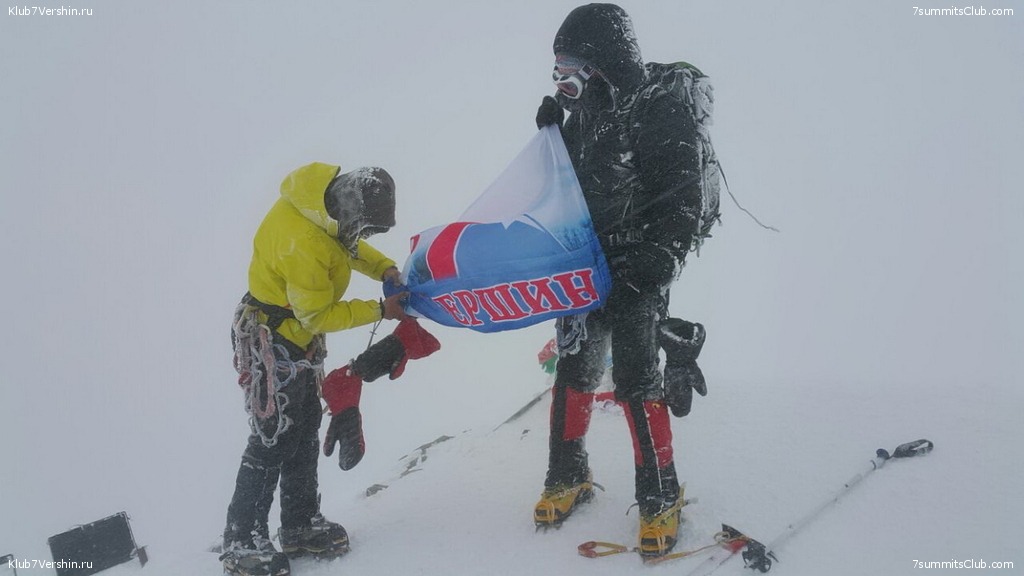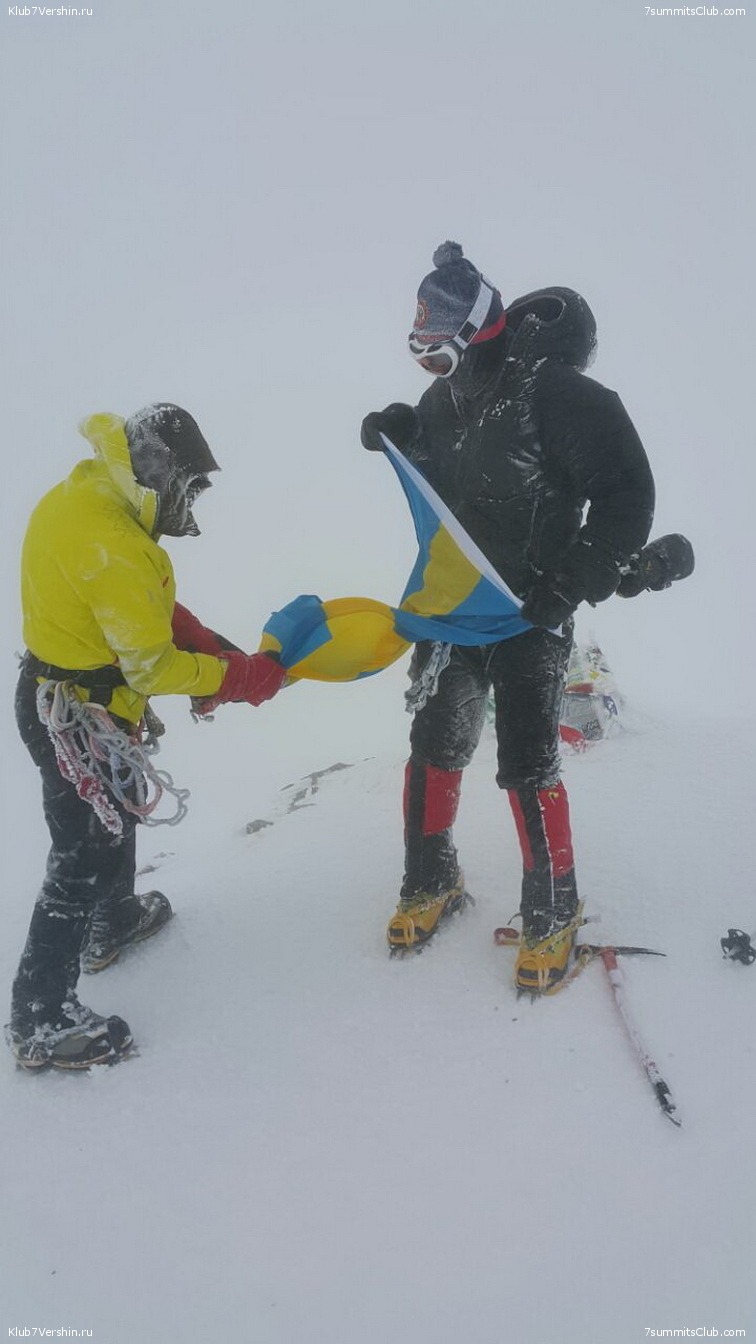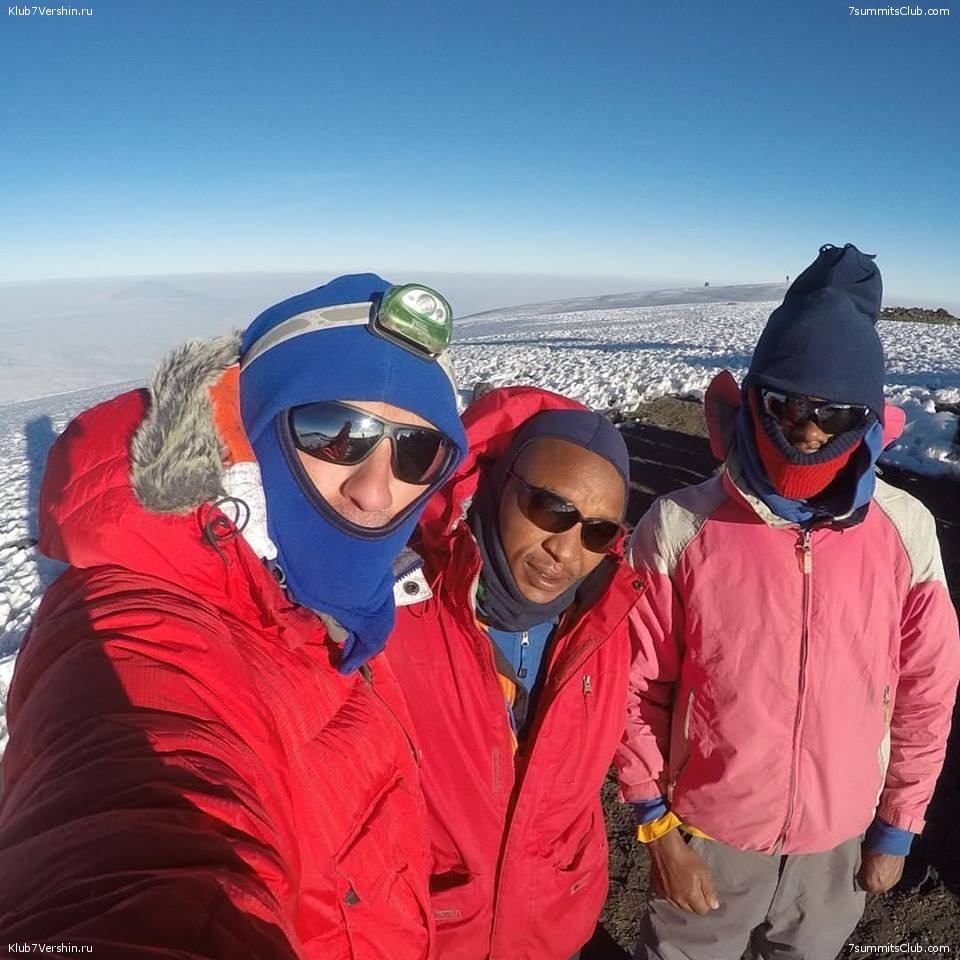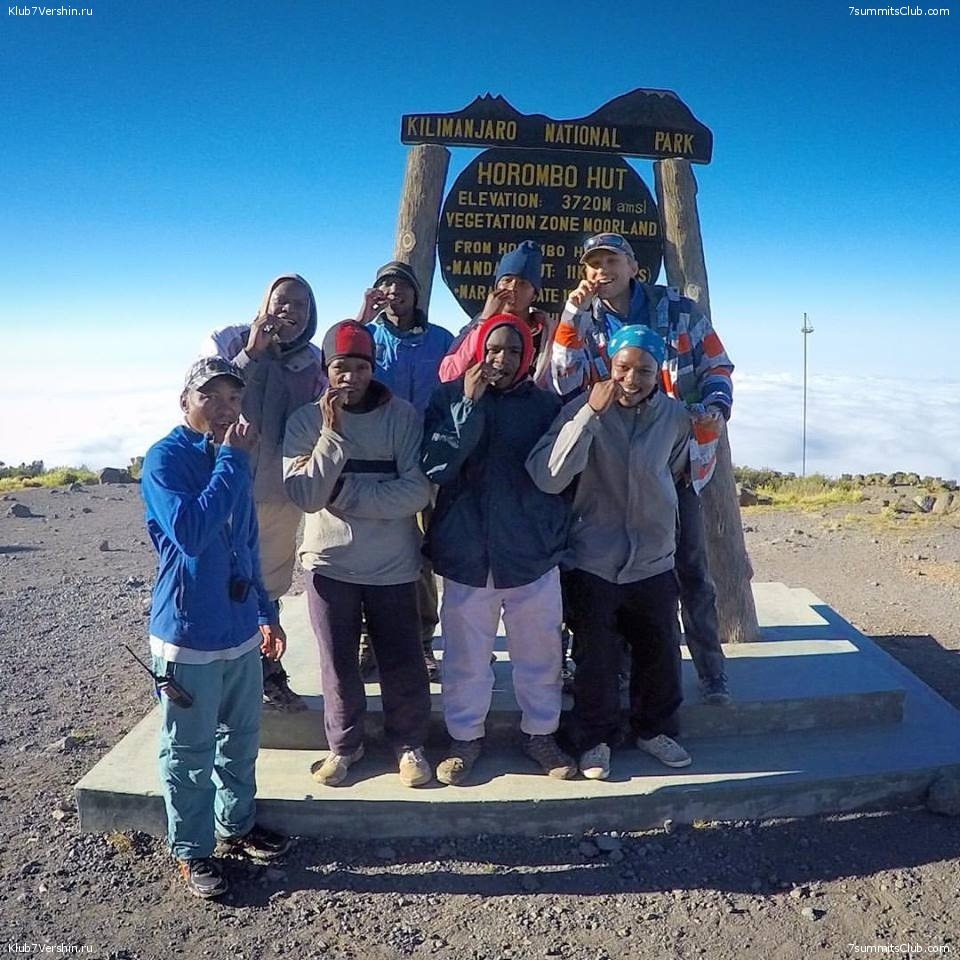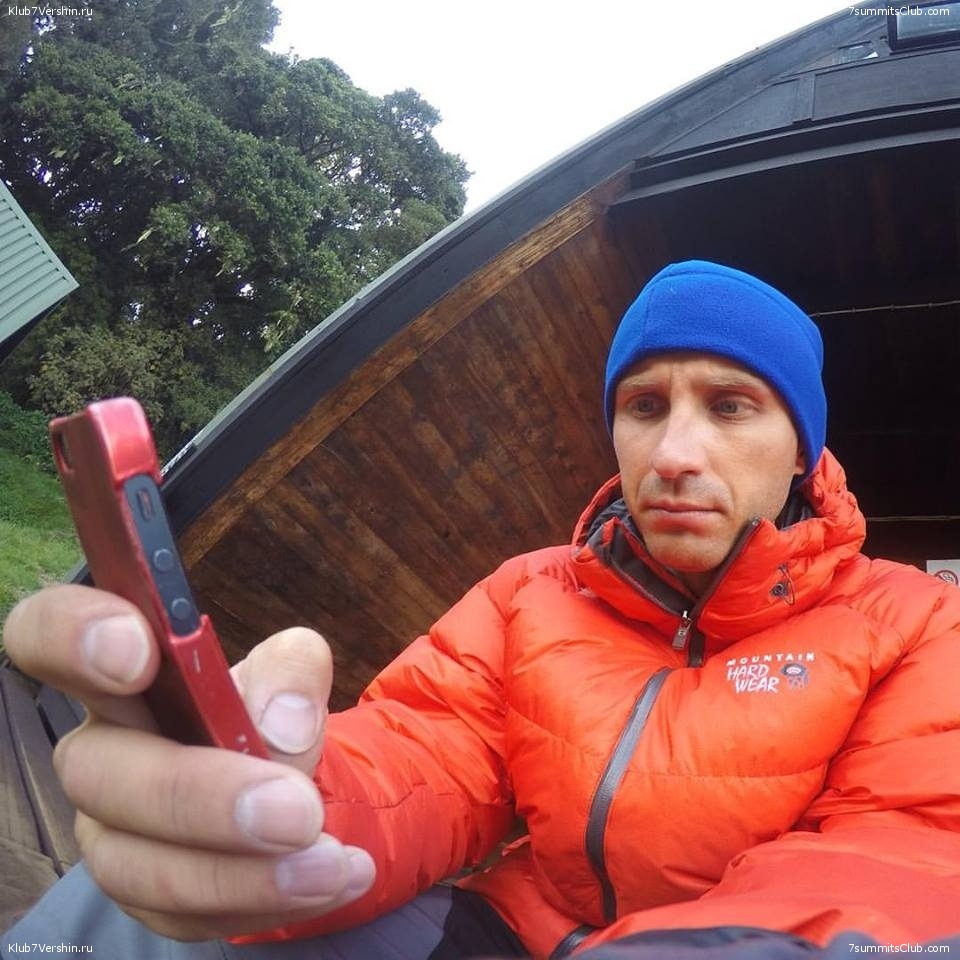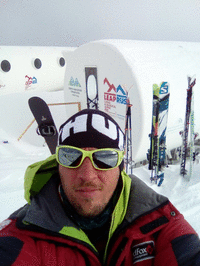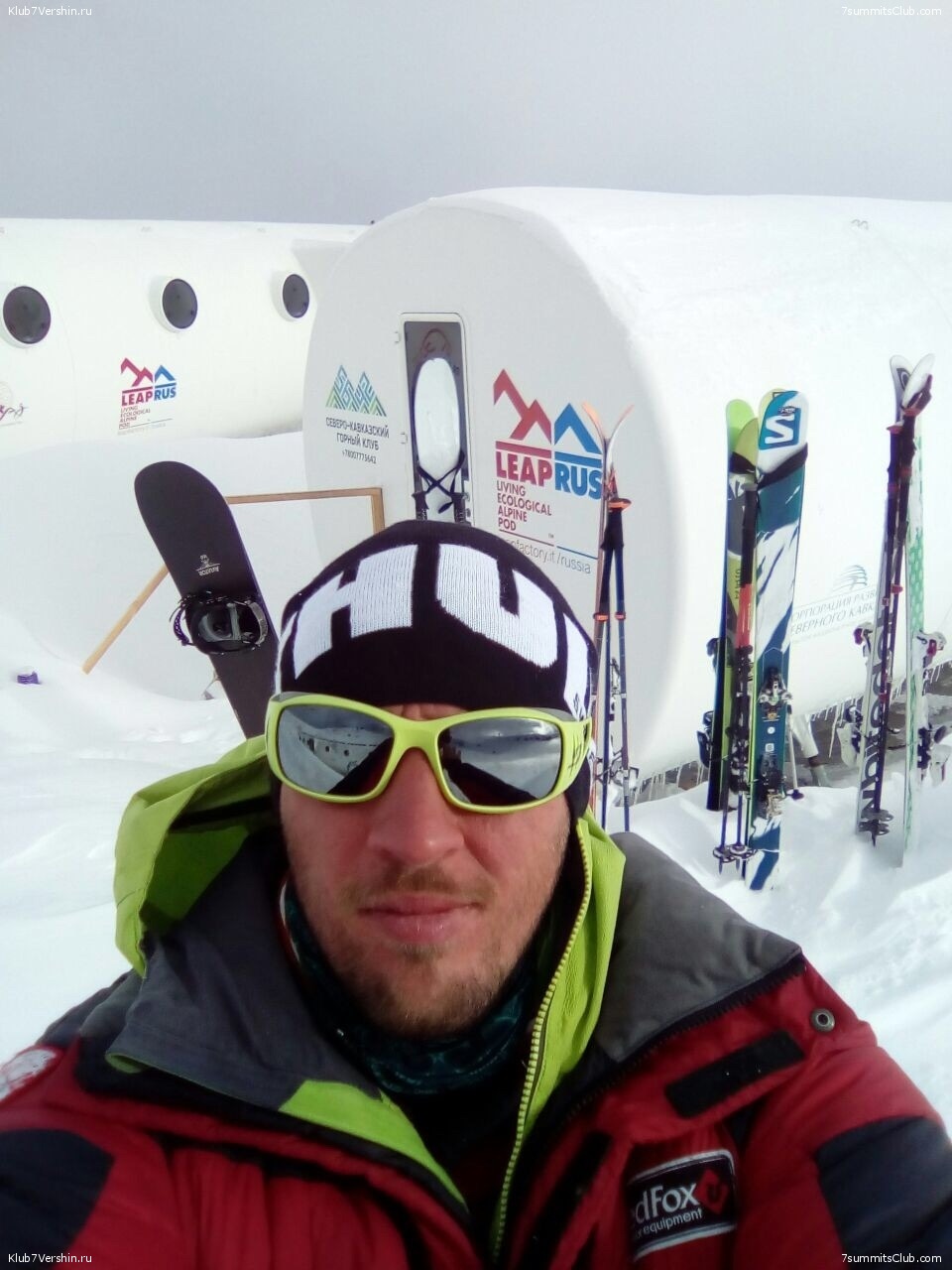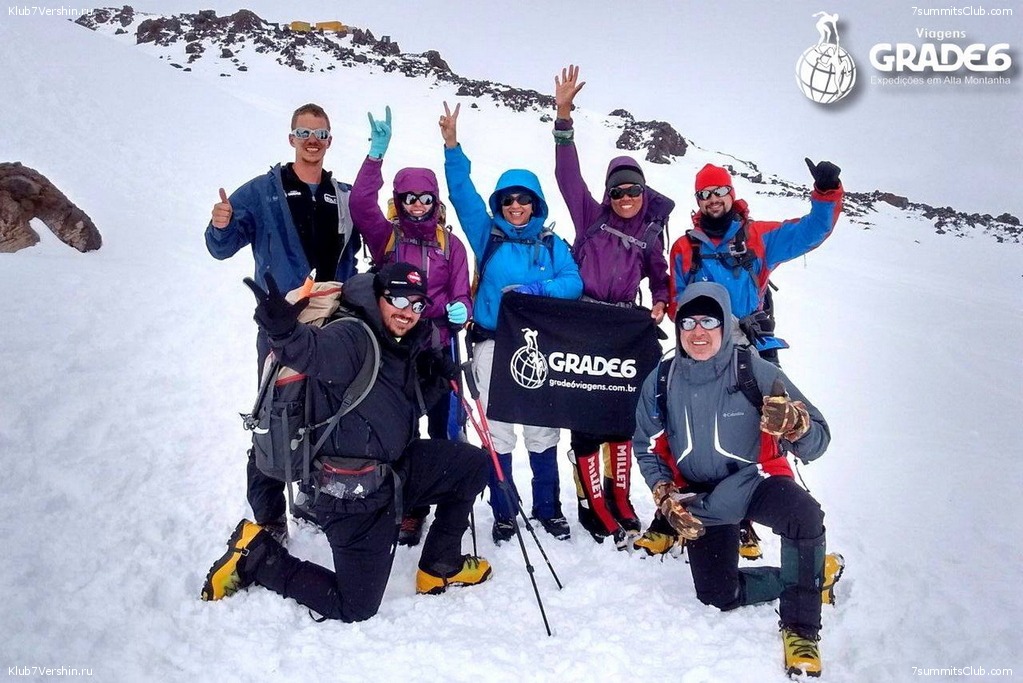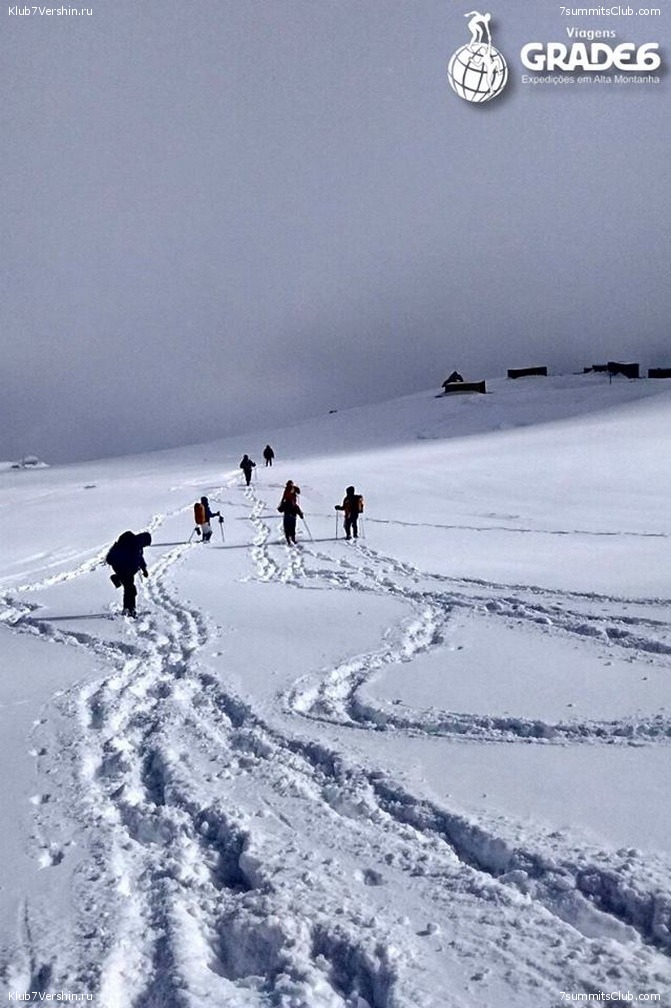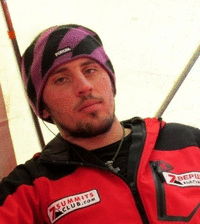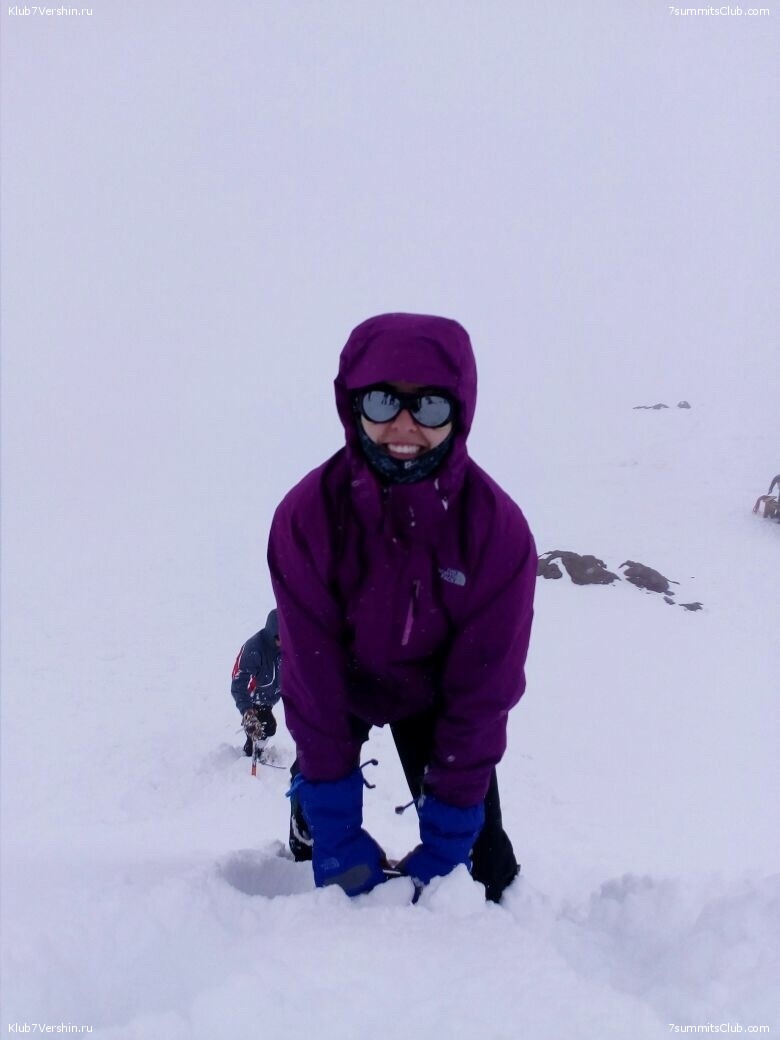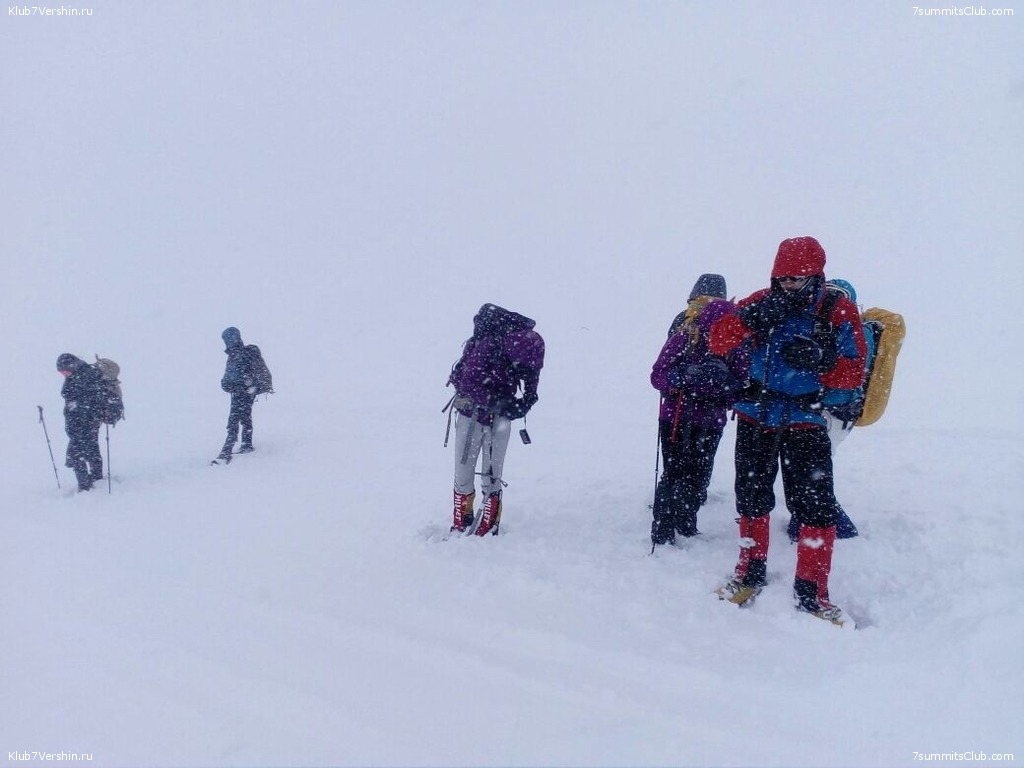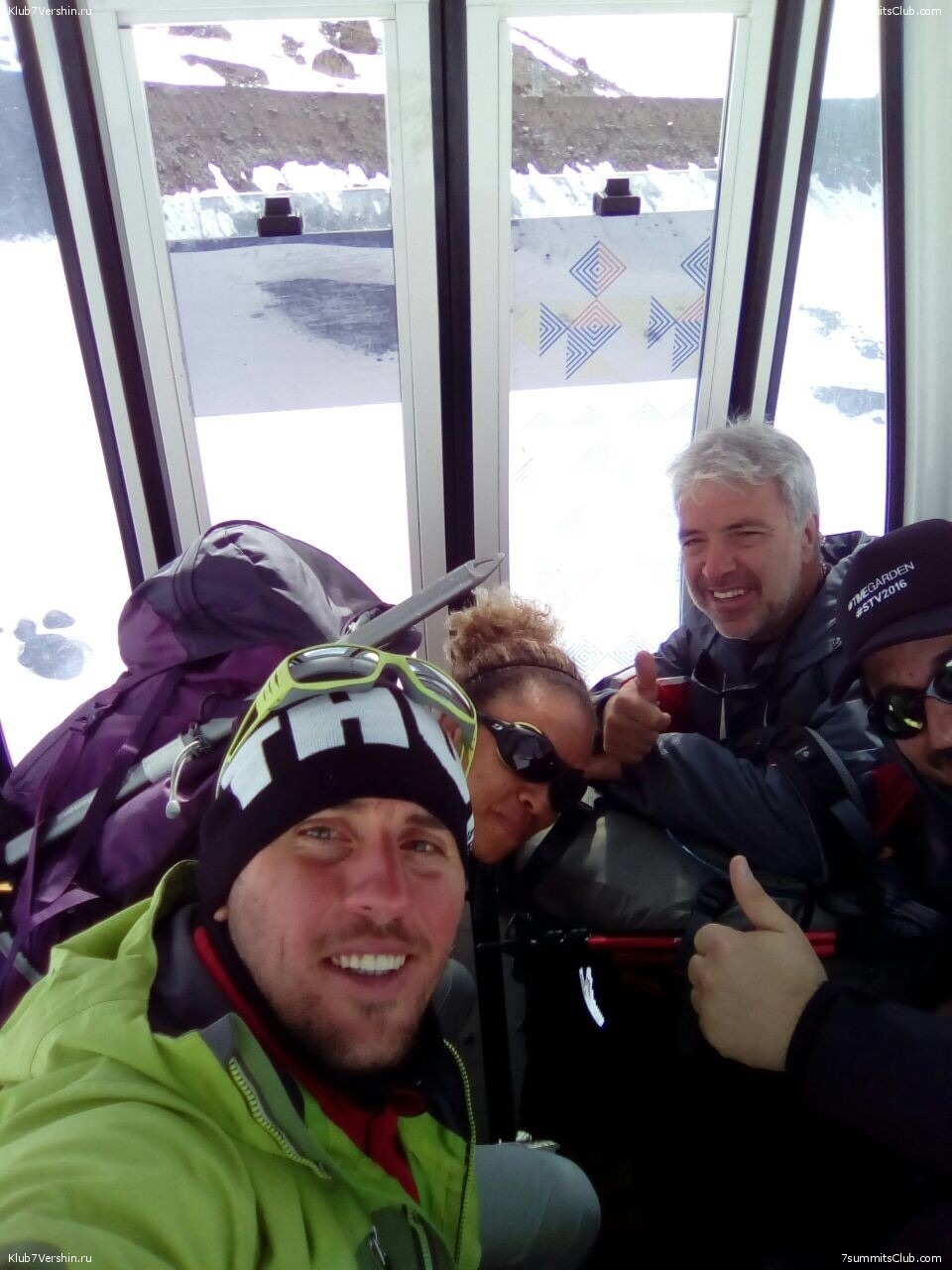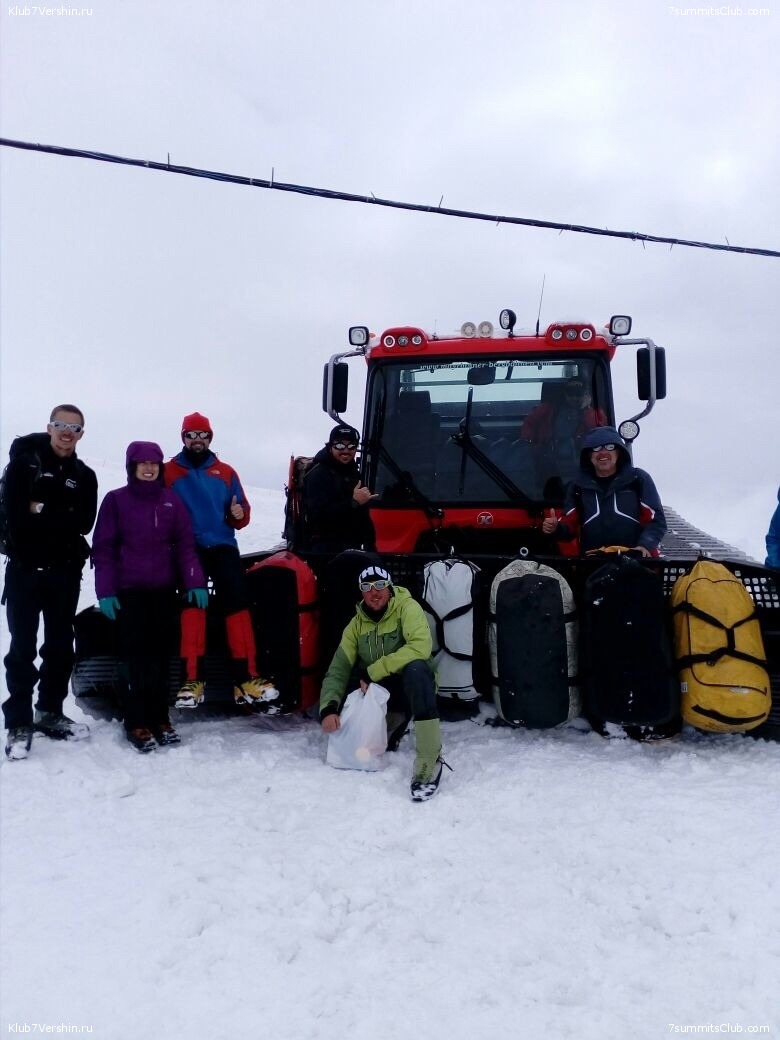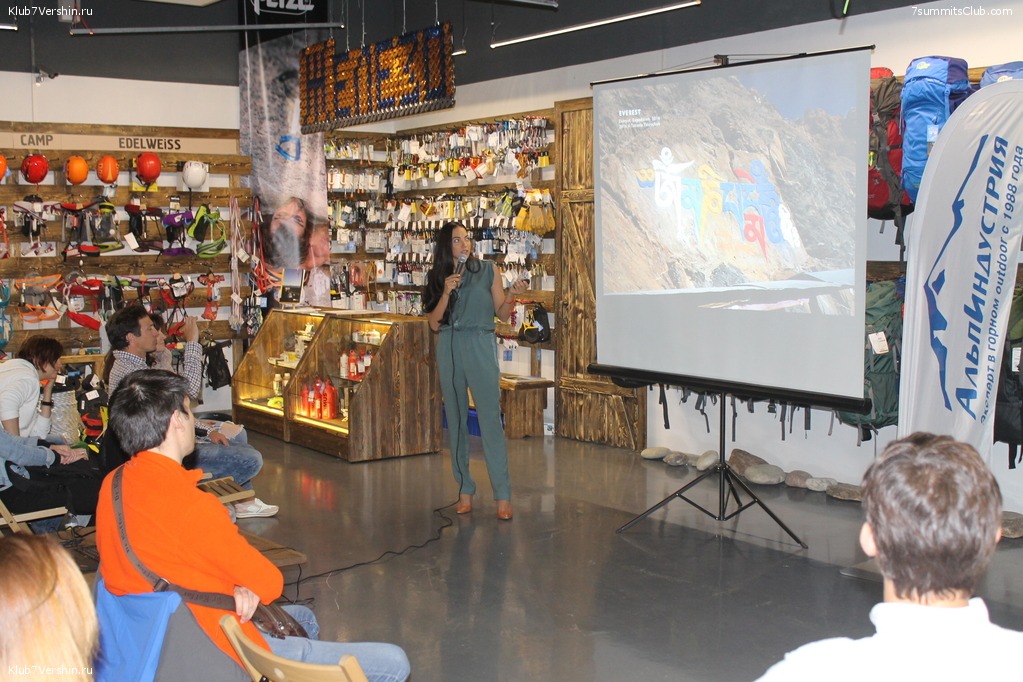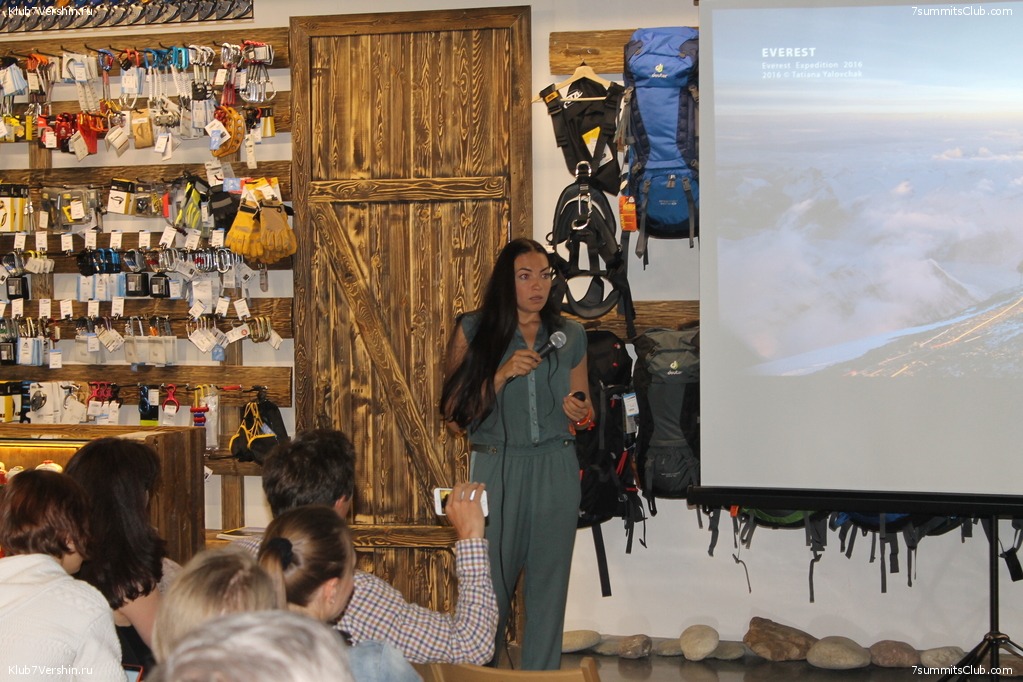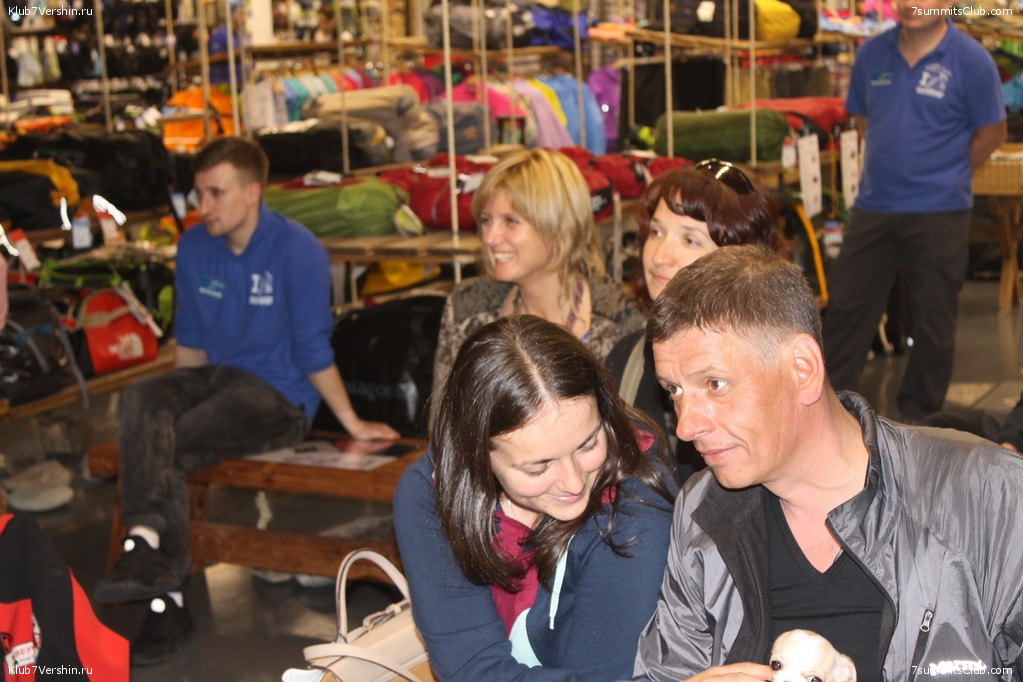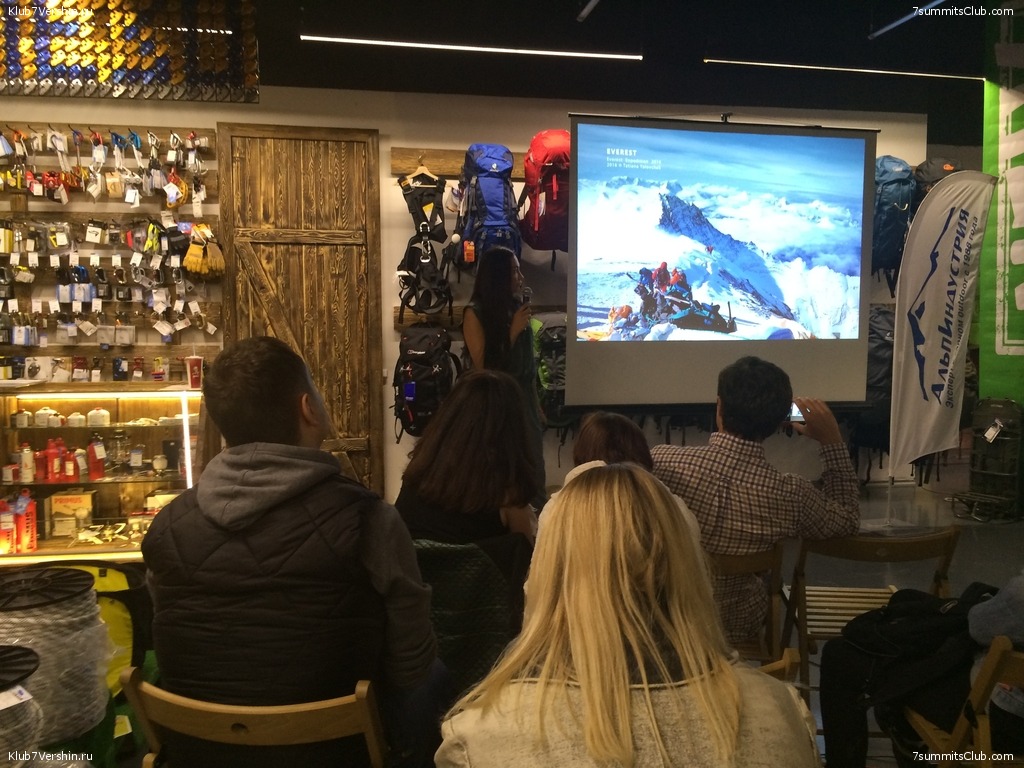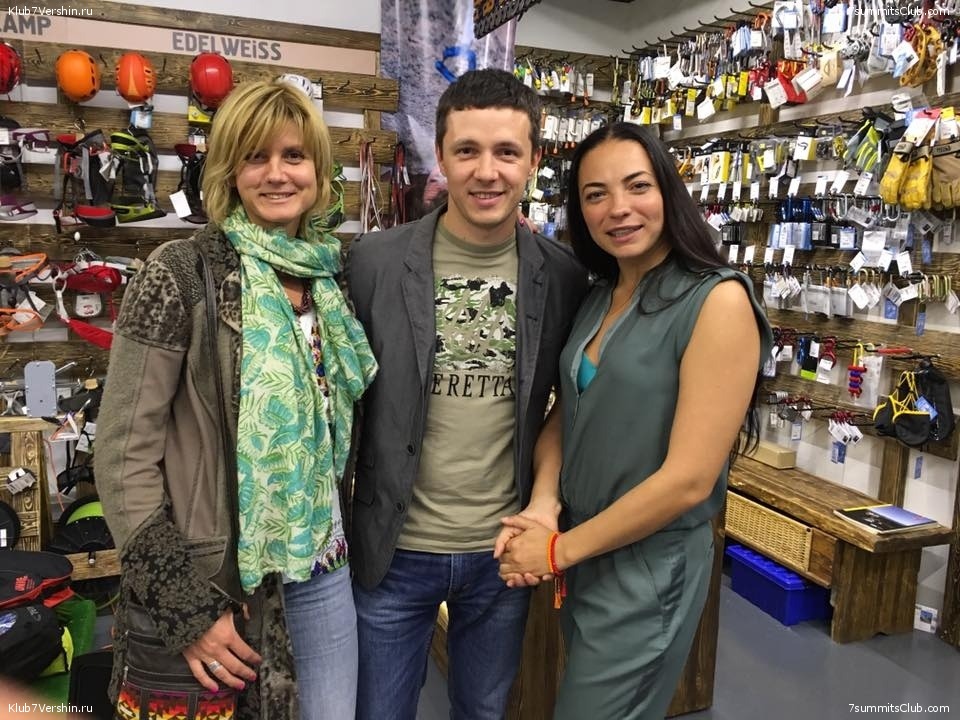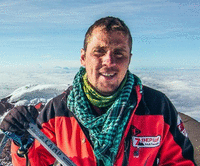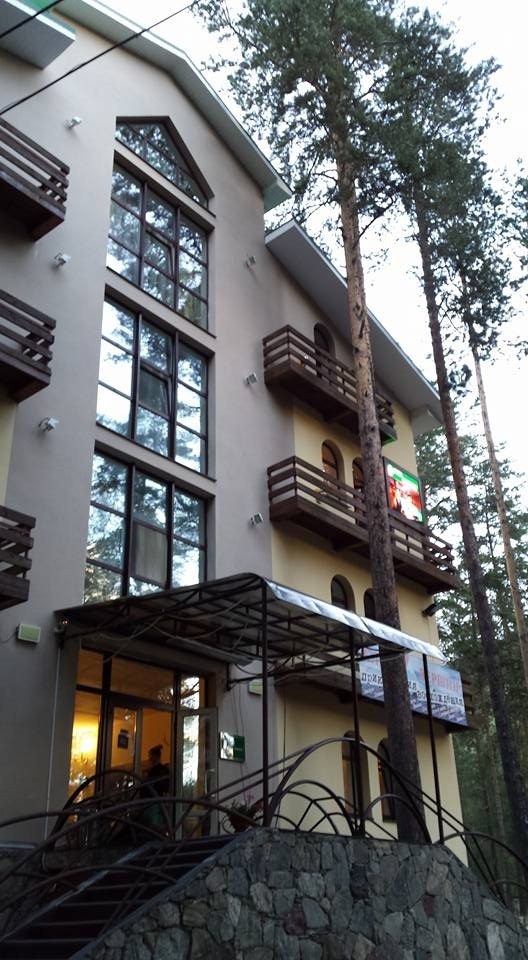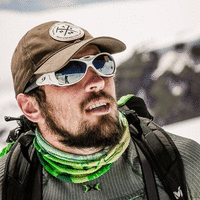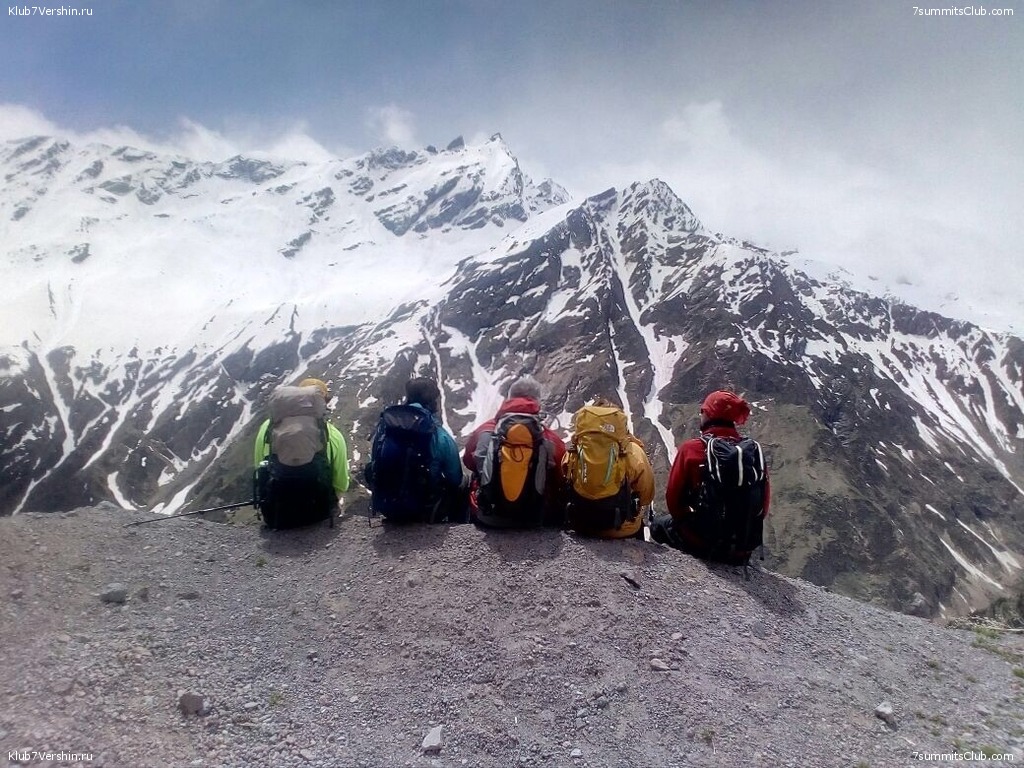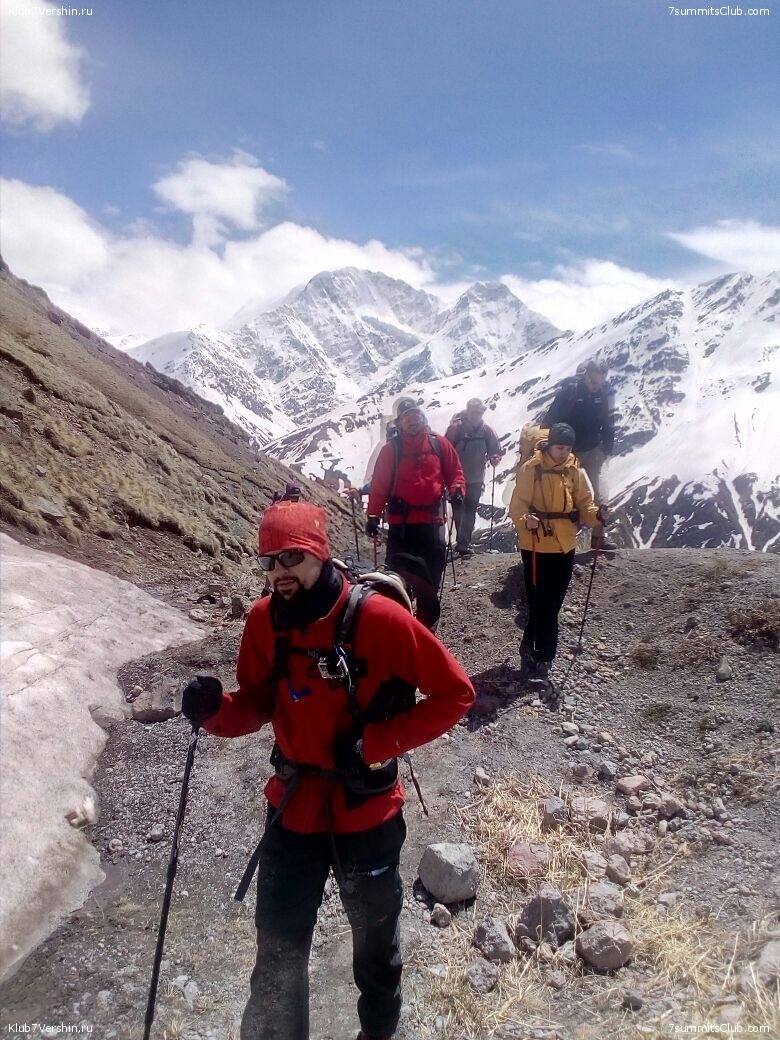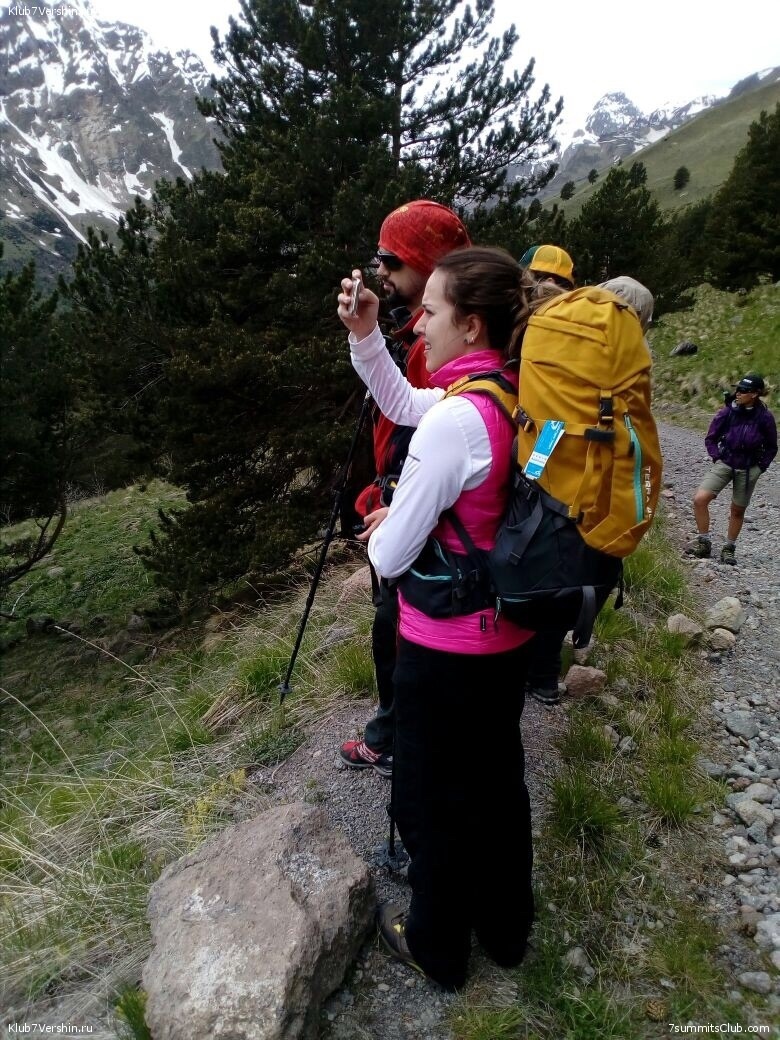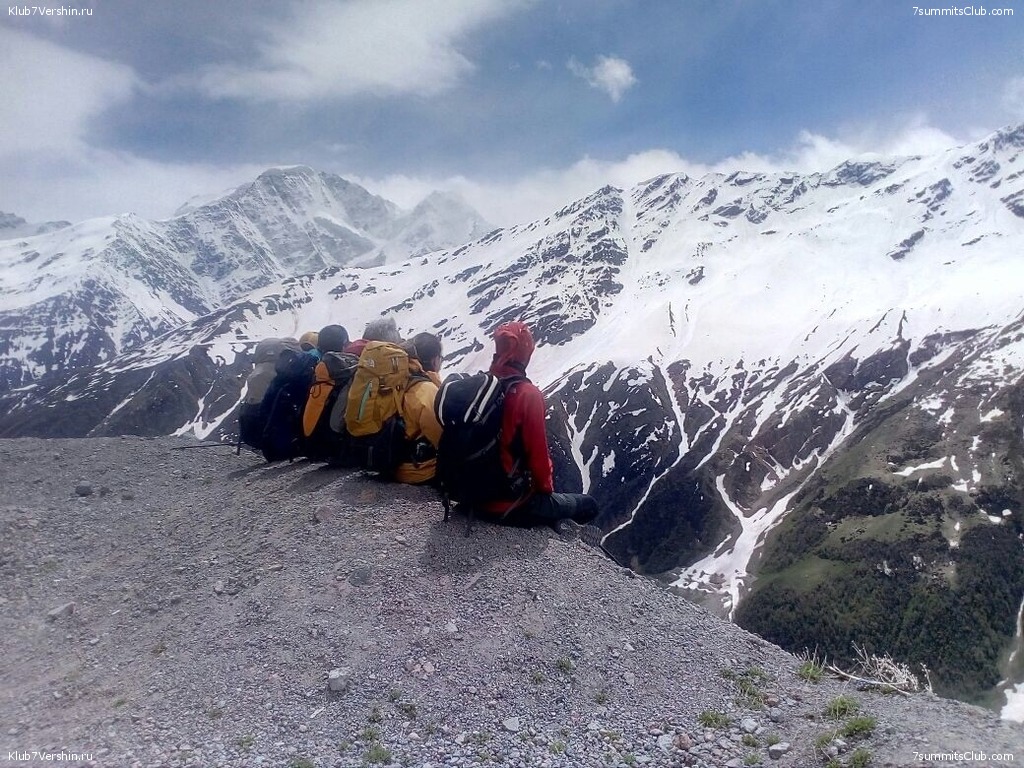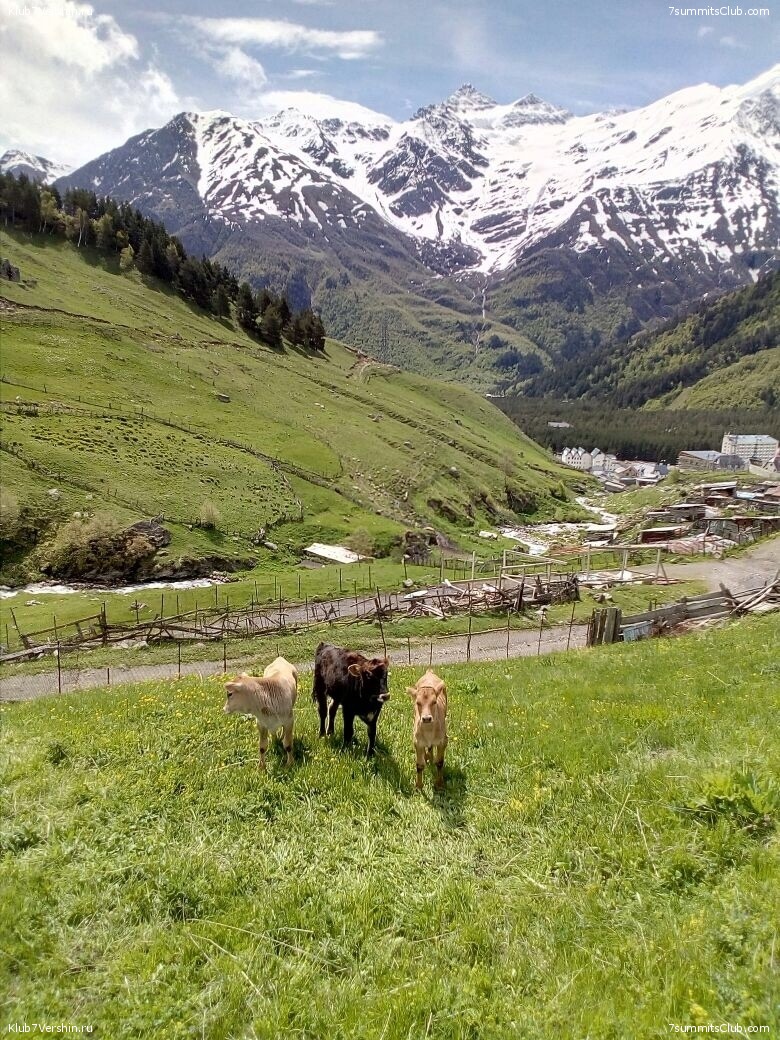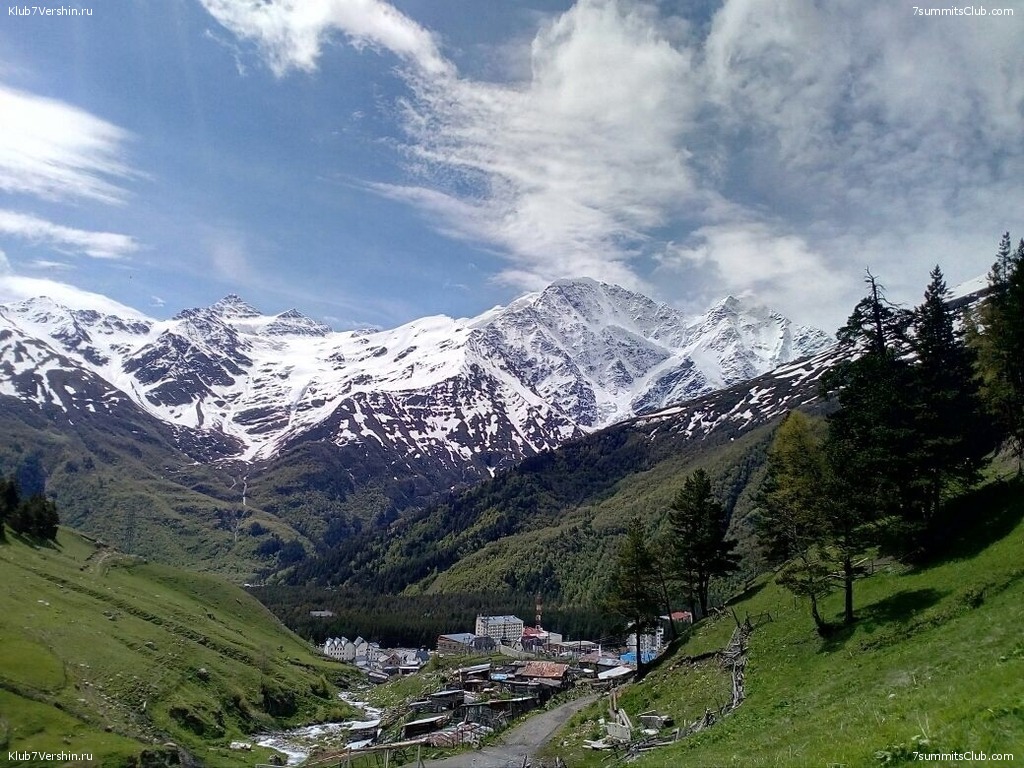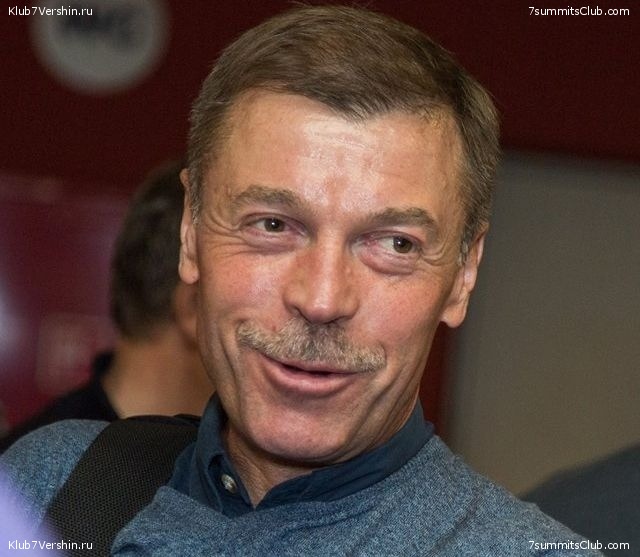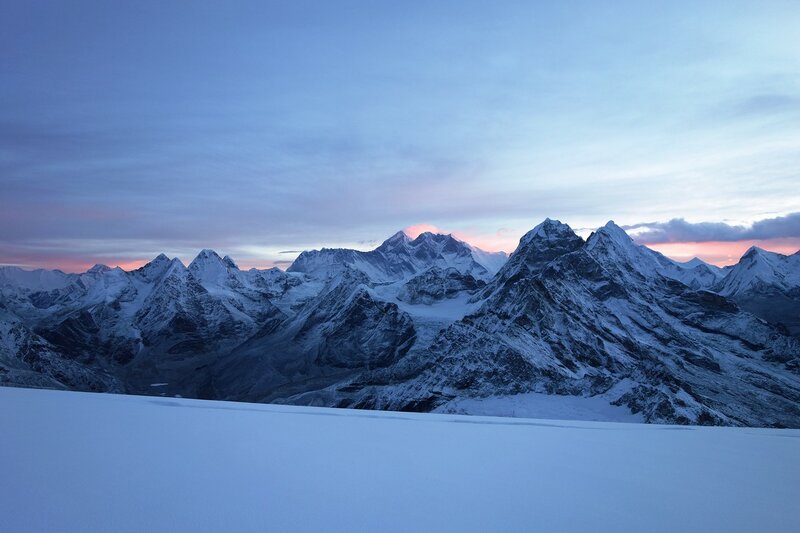All news - Page 243
Andrey Berezin began work with an international group
Elbrus.
Hello! This is Andrei Berezin, the 7 Summits Club guide, from Terskol. Yesterday, our new international group arrived in Terskol. It consists of representatives from different countries: Thailand, Israel and the Netherlands. There ...
Hello! This is Andrei Berezin, the 7 Summits Club guide, from Terskol. Yesterday, our new international group arrived in Terskol. It consists of representatives from different countries: Thailand, Israel and the Netherlands. There are also a few Russians. The group is very dynamic and fun. Today we went to the Observatory, the weather was sunny, for our joy. Now we are down to Terskol, tired but satisfied. The mood is good. Tomorrow, we rise up at the refuge Leaprus. Today, while we spend another night at an altitude of 2000 meters. In the green zone, so to speak. Andrei Berezin, 7 Summits. Bye to All!
Photos from the party of the 7 Summits Club in St. Petersburg, dedicated to the heroes of Everest-2016
Everest.
June 24th a meeting was held in our friendly bar-restaurant Discovery in St. Petersburg. Team of climbers was presented by Alexander Abramov, Lyudmila Korobeshko, Irena Kharazova, Igor Demyanenko, Reutov Roman and Vlad Moroz as ...
June 24th a meeting was held in our friendly bar-restaurant Discovery in St. Petersburg. Team of climbers was presented by Alexander Abramov, Lyudmila Korobeshko, Irena Kharazova, Igor Demyanenko, Reutov Roman and Vlad Moroz as the host.
Fully See all photos in our photo gallery
Sergey Larin's team completes their journey to Mount Denali
McKinley.
Sergey Larin: Hi, Seven Summits Club! You can congratulate us - we are in Talkeetna! Coming on the 24th of June in the 12 days of the camp at 5200, at 7 am on June 25, we were in the base camp, at the airport… ...
Sergey Larin: Hi, Seven Summits Club! You can congratulate us - we are in Talkeetna! Coming on the 24th of June in the 12 days of the camp at 5200, at 7 am on June 25, we were in the base camp, at the airport…
June 23 the group was at the top of Mount Denali. Congratulations to the heroes: Valery Tebiev, Dmitry Tomilin, Irina Redina, Yury Zimin, Paul Kostrikin, Sergei Shilkin and the guide Sergey Larin!
"Everest Golden double". Two friendly party in a row of 7 Summits Club. June 23th - in Moscow. June 24th - St. Petersburg
Everest.
We are going to celebrate, thank each other, telling stories that you have not heard, and show on the screen what you have not seen. The protagonists of the expedition to Everest in 2016 will be on the stage, you will be able to ...
We are going to celebrate, thank each other, telling stories that you have not heard, and show on the screen what you have not seen. The protagonists of the expedition to Everest in 2016 will be on the stage, you will be able to congratulate them.
The 7 Summits Club expedition under the leadership of Alexander Abramov ended with great success: 27 people climbed to the top of Mount Everest! 15 members + 12 Sherpas. Several participants went to the North Col, as planned. The main thing - all returned home safe and sound. It was established several record achievements for Russia, Europe and the World!
We invite all our friends!
Free admission
Moscow:
Most Pereyaslavskaya 7
7 Summits Club (store Outdoors)
beginning at 20.30 on Thursday 23 June.
St. Petersburg:
Big Pushkarskaya 30
The bar-restaurant Discovery
beginning at 18.30
Heroes who have returned from Everest, talk about how the expedition took place in 2016.
The crew of the first channel by Valdis Pelsh studio led daily (even a minute) survey of what is happening. The guys promise to show some of the footage.
In several records were set during this expedition.
This will be a separate story.
Summit!!! Group of Vladimir Kotlyar climbed Elbrus at a fast pace
Elbrus.
Hello! Here is Vladimir Kotlyar, climbing Elbrus program. Our team successfully climbed Mount Elbrus the West Summit. In a very brisk pace. And we are going down, at the " bias shelf." And time is - just half past ...
Hello! Here is Vladimir Kotlyar, climbing Elbrus program. Our team successfully climbed Mount Elbrus the West Summit. In a very brisk pace. And we are going down, at the " bias shelf." And time is - just half past eight in the morning. I feel like we have time today, without straining, to go down to Terskol and celebrate this cool case. The weather is wonderful. Visibility in principle good. The air has so thin mist. We see Ushba, Dogu Orun-Bashi, Nakra-Tau ... and much more. Weather fantastic and the sun shines we ... All, Adios!
Sergey Larin, with an information from the expedition on Denali
McKinley.
Hi Seven Summits! Take the information from Denali. Yesterday, June 16th, our team has made a depot in the assault camp at 5200. Today we had a day of rest. Tomorrow the plan was a way up. But the outing is delayed due to bad ...
Hi Seven Summits! Take the information from Denali. Yesterday, June 16th, our team has made a depot in the assault camp at 5200. Today we had a day of rest. Tomorrow the plan was a way up. But the outing is delayed due to bad weather. Due to the poor prognosis. We will wait for the weather, as is often in high-altitude mountaineering.
The state of health of group members is good, as well as mood.
Bye! Sergey Larin.
SUMMIT! In bad weather conditions, Andrey and Nikita climbed Mount Elbrus. SUPER PHOTOS
Elbrus.
Hello! This is Andrey Berezin, a guide of the 7 Summits Club, from Elbrus region. Today, our small but close-knit group, composed of me and Nikita Kalashnov, climbed in difficult weather conditions, on the Western summit of ...
Hello! This is Andrey Berezin, a guide of the 7 Summits Club, from Elbrus region. Today, our small but close-knit group, composed of me and Nikita Kalashnov, climbed in difficult weather conditions, on the Western summit of Mount Elbrus. At the top we were at 10:15 a.m., visibility was only about 5-7 meters. We took pictures with different flags, flags of different countries: Russia and Sweden. Also, with the flag of the 7 Summits Club. After this there was a short descent. Today, we went down to Terskol, now we are in our hotel "Povorot". Yes, we are tired, but happy that we managed to do it. Hello
Bye! Andrey Berezin
News and photos from Kilimanjaro. The climb of Alexander Susyan and start a new group
Kilimanjaro.
The program with Alexander Susyan ended by a successful ascent on Kilimanjaro. June 11th , Alexander was standing on the roof of Africa. Our congratulations! And today we have sent to Africa, a new group of Philip ...
The program with Alexander Susyan ended by a successful ascent on Kilimanjaro. June 11th , Alexander was standing on the roof of Africa. Our congratulations!
And today we have sent to Africa, a new group of Philip Yalovega and his friends: Eugene Yediny with his son Yaroslav, Rustam Tapaev and Rafik Singatullin.
They almost finished all preparations and have all fun ahead.
We wish them a happy journey and good luck!
Alexander Susyan highlighted their journey on FB
Kili was extremely favorable to us
Man who is not born of my mother, I can call my brother only when we were together, shoulder to shoulder, and we passed some extreme test of body and spirit.
With Victor we passed a merciless slaughter, reached so desired summit and descended into the mountain goats mode, so that the sand on teeth I heard even during lunch
We've done it, my black Bro! Black-and-white brothers)
SUMMIT. A short report about the ascent of Brazilian group by Vladimir Kotlyar
Elbrus.
Hello everyone! It is Vladimir Kotlyar, a guide of the 7 Summits Club. Our Elbrus Climb program we ended successfully. The whole group of seven men and three guides are on the top. Ten people - a good result. The weather was just perfect, ...
Hello everyone! It is Vladimir Kotlyar, a guide of the 7 Summits Club. Our Elbrus Climb program we ended successfully. The whole group of seven men and three guides are on the top. Ten people - a good result. The weather was just perfect, calm, clear - you can see all the mountains around. Super! And today, we have, so to speak, a day of rest after yesterday's hard work. In fact, the group was gone, I was left with only two members. And we are catching the rays of the sun, walk in the woods. In general, I congratulate the whole team on the successful ascent! More I congratulate himself! With the opening of the season on Elbrus. This was the first group and the first ascent of my season.
Brazil group on the top of Elbrus. VIDEO
Elbrus.
Video from the summit of Elbrus. The group reached the highest point of Europa 12th of June at ap. 10-30 a.m. Moscow Time. Congratulations!
Video from the summit of Elbrus. The group reached the highest point of Europa 12th of June at ap. 10-30 a.m. Moscow Time. Congratulations!
Information from Sergey Larin about the expedition on Denali
McKinley.
Hello, Seven Summits! Take the information from Denali. Our expedition on Denali goes on, everything is going according to the plan. We arrived on the glacier at 4 pm June 8th. In the morning on June 9 th, we woke up to go to the first ...
Hello, Seven Summits! Take the information from Denali. Our expedition on Denali goes on, everything is going according to the plan. We arrived on the glacier at 4 pm June 8th. In the morning on June 9 th, we woke up to go to the first camp. And we have successfully done, 9th of June we reached the first camp. It was tough, because we came with a full load. Today we made depot on the 3000 meters. Now we return to the first camp, and according to the plan we have tomorrow output in the second camp, but now with a lighter load. Next we'll look at the weather and the state of the route. That is, everything goes according to plan, it's okay. Bye!
Listen to an audio message (in Russian):
Photos from Elbrus. Brazilians climbed the Pastukhov Rocks in a snowstorm and blizzard
Elbrus.
Hello everybody! It is Vladimir Kotlyar, a guide of the team of Brazil's "Family Gribel." Today we went with the purpose of acclimatization to Pastukhov Rocks. Despite the fact that the weather is persistently repeated in ...
Hello everybody! It is Vladimir Kotlyar, a guide of the team of Brazil's "Family Gribel." Today we went with the purpose of acclimatization to Pastukhov Rocks. Despite the fact that the weather is persistently repeated in principle "entertain, but drink!" and do not go anywhere. But anyway - we have collected will in a fist, and went upstairs. There was a hard snowstorm, showering a dense snow, looking more like a rump. In general, we came back happy, tired ... Now here we will rest a little bit and go to dinner. Well, still, tomorrow we have a day of rest. Well, we start it now. Adios!
Listen to audio messages (in Russian):
Tatyana Yalovchak public spoke in Moscow, it turned out in dialogue with guests
Everest.
Public Speaking Ukrainian Summiter of Everest, expedition member of the 7 Summits Club, Tatiana Yalovchak visited Moscow. She paid tribute to the teachers in mountaineering Sergei Kovalev and Elena Kovaleva, who now live and ...
Public Speaking Ukrainian Summiter of Everest, expedition member of the 7 Summits Club, Tatiana Yalovchak visited Moscow. She paid tribute to the teachers in mountaineering Sergei Kovalev and Elena Kovaleva, who now live and work in the capital of Russia. Surprising it took place almost in the form of a dialogue with the audience, which is not often. We can call it a success and a credit to both sides. The audience was curious, and Tanya spoke easily, but at the same time emotionally and honestly.
You are free to listen to excerpts of her speech
Subjectively, we note four points:
(1) Tatiana has been climbing for about 8 years. She went into the mountains as an amateur. It is her climbing teacher Sergei Kovalev, who suggested the idea - to become the first Ukrainian Everest woman summiter. On his initiative and this meeting took place. Many Thanks!
(2) From the beginning to the end of the expedition Tanya felt as a child. It means full service, excellent living conditions and the best provision - full opportunity to be focused only on their own physical condition. Quality of service 7 Summits Club praised.
(3) From the first to the last minute, Tanya had no doubt of success, never appeared the idea that you can give up and retreat.
(4) At the urging of Alex Abramov, Tatiana decided not to make the race for the "Ukrainian championship" with another contender - Irina Galay. Tatiana went to the summit climb a day later to avoid someone's haste. After all this haste would not only prevent the summit ascent, but also lead to more dire consequences. It's some kind of a moral victory of Tatiana Yalovchak.
(5) And there are no plans connected with the mountains. Rest, watch football at the European Championship, to get married and give birth...
Happiness to you Tanya! We will be still hoping to meet on a mountain trail.
Vladimir Kotlyar from Terskol: today the group climbed to the area of Refuge of Eleven
Elbrus.
Hello! This Vladimir Kotlyar (a guide of the 7 Summits Club), climbing program Elbrus with a Brazilian group of Gribel family. Today we made acclimatization to region of the Refuge of Eleven. We spent time training with ...
Hello! This Vladimir Kotlyar (a guide of the 7 Summits Club), climbing program Elbrus with a Brazilian group of Gribel family. Today we made acclimatization to region of the Refuge of Eleven. We spent time training with ice axes, crampons, tumbled in the snow. It was fun, cool! Now we are down to Terskol to spend here one more night in the warmth and comfort. With a warm shower, a white toilet, I do not know what else ... a delicious meal, which is prepared by chef. Well, in general, we're leaving tomorrow already on the mountain, with refuge overnight stay. All the best! Bye!
Listen to an audio message:
Vladimir Kotlyar: the first acclimatization outing for the Brazilian group. PHOTOS
Elbrus.
All, Bon Dias! Good afternoon! Here Vladimir Kotlyar a guide of the 7 Summits Club, from Elbrus region. Today we had an acclimatization outing to the Observatory. It is at an altitude of 3100 meters above sea level. ...
All, Bon Dias! Good afternoon! Here Vladimir Kotlyar a guide of the 7 Summits Club, from Elbrus region. Today we had an acclimatization outing to the Observatory. It is at an altitude of 3100 meters above sea level. Actually, we just came here and ate, and began to descend. All members of our group "Family Gribel" . So everything is fine, everything is good. We did it! Now - descend, for rental, dinner, rest. Tomorrow it will be a new day of acclimatization. All over, adios! Bye!
Sergey Larin's team arrived in Talkeetna, far - only by plane
McKinley.
Good morning, Seven Summits Club! It is Sergey Larin. Best regards from Alaska! Our expedition on Denali starts. Today the whole group arrived in Talkeetna. Now you in Moscow have a morning and we go to bed. Tomorrow we will ...
Good morning, Seven Summits Club! It is Sergey Larin. Best regards from Alaska! Our expedition on Denali starts. Today the whole group arrived in Talkeetna. Now you in Moscow have a morning and we go to bed.
Tomorrow we will have a difficult day of training and, if the weather allows, we have to fly in 15.30 to the glacier Kahiltna. Prior to this, in three days planes did not fly to the glacier. Today is the first day. After the break, the aircraft departed and trampled the runway for us.
We hope for the best! Bye! Sergej Larin.
Club 7 Summits Expedition on Mount Denali began today
McKinley.
Today, June 6, the expedition 7 Summits Club went on the climb the highest peak of North America - Denali (6194 m). Leader od the team - Sergey Larin (5-times summiter on Mount Everest) ... Participants of ...
Today, June 6, the expedition 7 Summits Club went on the climb the highest peak of North America - Denali (6194 m).
Leader od the team - Sergey Larin (5-times summiter on Mount Everest) ...
Participants of the expedition:
- Irina Redina;
- Dmitry Tomilin;
- Valery Tebiev;
- Yury Zimin;
- Paul Kostrikin;
- Sergey Shilkin.
Today, the whole team is going to meet in Anchorage (Alaska). Tomorrow, June 7, it is scheduled a transfer to Talkeetna. June 8th to the plan the group will fly to the Kahiltna Glacier.
We wish the team luck and the weather!
Currently, only 18% of climbers, that completed the program, reached the summit of Denali. Now on the mountain, it is more than 500 climbers. In early June fell "big snow" - about one meter.
Mera Peak 2016. Summit climb by Olga Rumiantseva
As agreed the previous evening, at two o'clock in the morning we were going to have breakfast and go on a long journey. Slowly tossing in a sleeping bag, I tried to delay the moment of lifting the stern. But when he heard the ...
As agreed the previous evening, at two o'clock in the morning we were going to have breakfast and go on a long journey.
Slowly tossing in a sleeping bag, I tried to delay the moment of lifting the stern. But when he heard the talk and cheerful tinkle of gear members of the expedition, I was forced to accelerate.
The sky was covered with stars, and there were no signs of surprises.
Christina finally got sick. She crawled out of the tent, but listlessly wandered around the bush, periodically asking me whether to go to her at the top.
Those who could, had breakfast. Christine was able to have breakfast. But later she took a heroic decision not to go to the summit.
Но поалев очень эпизодически, так и рассосался в ровное светлое небо.
В целом все было бы ничего. Кроме двух мелких деталей.
Во-первых, погода не обещала ничего хорошего и не давала расслабляться.
Ну и еще. Идя первым, тропя дорогу в снегу, Пемба просто выбивался из сил. Сначала он шел достаточно бодро, но потом все чаще начал останавливаться. Два шага - остановка, два шага - остановка.
Irene Kharazova - the first Armenian woman on Everest
Everest.
May 20, 2016 Irene Kharazova raised the Armenian flag on the highest point of the world. Irene - the first Armenian, climbed Everest. In an exclusive interview, she talks about his emotions, about what attitude and preparation are ...
May 20, 2016 Irene Kharazova raised the Armenian flag on the highest point of the world. Irene - the first Armenian, climbed Everest. In an exclusive interview, she talks about his emotions, about what attitude and preparation are needed to overcome such obstacles as it responds to her mountaineering interest with the family and many other things.
When did you start one of the most extreme sports - rock climbing?
The desire to conquer the heights appeared at me exactly 5 years ago. I returned from Zanzibar, where she spent the holiday, and the pilot said, "And now, look to the left, it is the legendary Mount Kilimanjaro, the one who wants to afford something to prove conquer it." After arriving to Moscow, I first organized climbing. I liked it and I was involved in the project "7 Summits" - 7, the highest points on 7 continents that need to conquer. Everest – is the sixth....
Tatiana Yalovchak Ukrainian summiter of Mount Everest
Everest.
Tatiana Yalovchak climbed Mount Everest in the team of the 7 Summits Club. She reached the summit with one of the symbols of Ukraine – an embroidered towel. "I am happy that I brought the rushnyk with me. Our symbol of strength, ...
Tatiana Yalovchak climbed Mount Everest in the team of the 7 Summits Club. She reached the summit with one of the symbols of Ukraine – an embroidered towel.
"I am happy that I brought the rushnyk with me. Our symbol of strength, goodness, beauty and peace And a part of my soul with him. Hope for prosperity and peace in Ukraine"
